Training your dog can sometimes feel like you’re navigating through a maze without a map. However, with the right approach and understanding, it can transform into an enriching experience for both you and your canine companion. Whether you’re teaching basic commands or refining behavioural issues, these top seven dog training tips will set you on the path to success. From puppies to seniors, these tips are universally applicable, fostering a strong bond between you and your beloved pet.
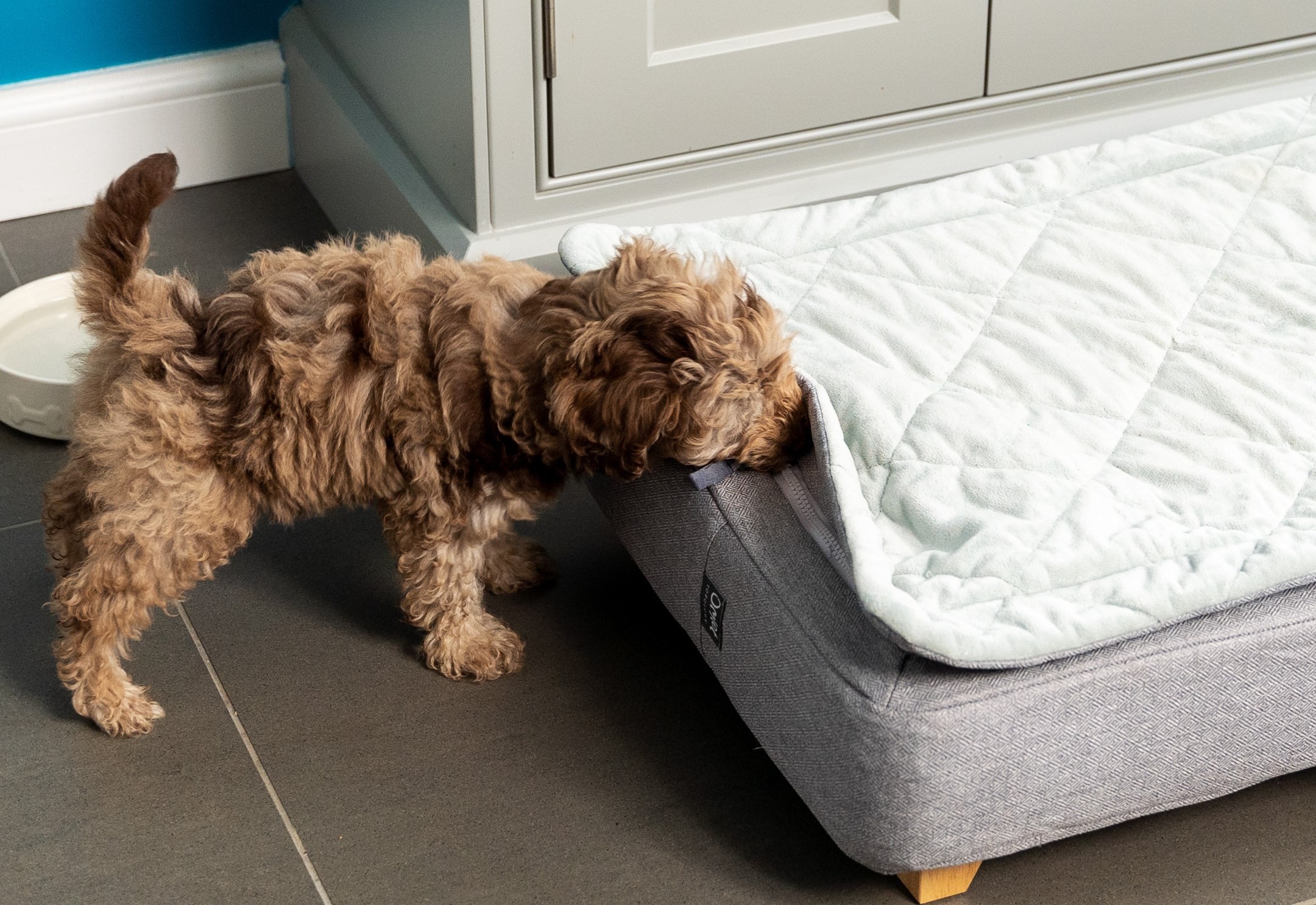
Consistency is key
Consistency is the cornerstone of effective dog training, much like the steady rhythm of a heartbeat. Dogs thrive on routine and predictability, and it’s through consistent actions and expectations that they learn best. So whether you’re teaching basic commands like sit and stay or more complex behaviours, such as walking on a dog lead without pulling, maintaining a consistent approach is paramount.
To achieve consistency in dog training, consider establishing a set schedule for training sessions. Just like how we mark our calendars for important events, setting aside dedicated time each day for training reinforces the routine for both you and your pup. Additionally, use consistent verbal cues and hand signals for commands, ensuring clarity in communication. Dogs are brilliant at picking up patterns, so sticking to the same cues for desired behaviours helps solidify their understanding.
Moreover, consistency extends beyond formal training sessions—it’s about applying the rules consistently in all interactions. Whether it’s not allowing your dog on the couch or insisting on sitting before meals, enforcing these boundaries consistently reinforces the desired behaviour. Think of it as setting the stage for your dog’s success by creating a reliable framework within which they can thrive and learn.
Positive reinforcement
Positive reinforcement is the gold standard in modern dog training. With this essential component, it’s all about highlighting the good stuff – the behaviours you want to see more of – with rewards that make your dog’s tail wag with delight. Think of it as a canine high-five for a job well done. So, when your furry friend nails that perfect sit or finally masters the art of fetch without chasing squirrels halfway across the park, whip out their favourite dog treats and shower them with praise.
However, in a recent interview with Kieren Beckles, co-founder and editor of helloBARK! And LifeWithKleeKai, he described how food and treats don’t always work as motivators for all dogs. Speaking about his two Alaskan Klee Kai dogs, Kieran said, “We had different experiences training Copper and Skye. Skye isn’t food motivated so it required a lot of repetition and positive reinforcement. Copper is food motivated but easily distracted so we used treats and repetition.”
So positive reinforcement is not just about the treats. Sure, those tasty morsels work wonders, but it’s also about showering your pup with praise, scratches behind the ears, and maybe even a goofy victory dance. Dogs thrive on love and attention, and when they associate good behaviour with all these good vibes, they’re bound to repeat it. When it comes to positive reinforcement, precision and timing are key. So make sure to dish out those rewards pronto, right when your dog performs the desired behaviour.
Patience pays off
Patience is not just a virtue; it’s the secret sauce in successful dog training. Much like us humans, our furry companions need time to understand, learn, and adapt to new behaviours. Rushing the process often leads to frustration for both the trainer and the pup. So when it comes to dog training, take a deep breath, and embrace the power of patience. As Kieran from helloBARK! says, “training is a way to connect to them (dogs) on a deeper level and understand their individual needs.”
It’s easy to get frustrated when your dog doesn’t grasp a command right away, but patience and persistence are your best allies. Break down each training task into manageable steps, rewarding incremental progress. Remember, Rome wasn’t built in a day, and neither are well-trained dogs. So celebrate small victories along the way. Whether it takes a few weeks or a few months, trust that your patience will pay off in the form of a well-behaved and happy dog by your side.
Clear communication
Effective communication is vital in any relationship, including the one you share with your dog. Dogs rely on body language, tone of voice, and verbal cues to interpret commands and expectations. So when you’re doing any type of training with your dog, use clear and concise commands, accompanied by corresponding gestures or signals. And keep your body language open and inviting to convey confidence and authority without intimidation.
For instance, when teaching your pup to sit, pair the verbal cue “sit” with a hand signal—a raised palm works wonders. Consistency is key; ensure everyone interacting with your dog uses the same cues and signals to avoid confusion. Remember, dogs don’t understand human language but can pick up on tone and body language effortlessly, so by keeping your signals clear and your demeanour positive you will better engage them in the training.
Mental stimulation
When it comes to dog training, mental stimulation is just as important as physical exercise. Much like humans, dogs need mental challenges to keep their minds sharp and engaged. Incorporating mental stimulation into your training routine not only prevents boredom but also strengthens the bond between you and your furry friend. Try incorporating puzzle toys or interactive dog toy games into your training regimen. These not only provide mental stimulation but also give your pup a chance to problem-solve and work out their cognitive muscles.
Another effective way to provide mental stimulation is through scent work. Dogs have an incredible sense of smell, and tapping into this natural ability can provide hours of entertainment. Hide dog treats around the house or in the backyard and encourage your dog to sniff them out. This not only engages their mind but also taps into their instinctual behaviours. By incorporating mental stimulation into your dog’s training routine, you’ll not only keep them mentally sharp but also strengthen your bond and have a happier, more well-rounded pup.
Socialization
Socialization plays a pivotal role in dog training, much like how meeting new people broadens our horizons. Dogs thrive on interaction and exposure to various environments, sounds, and stimuli from an early age. So introducing your furry friend to a spectrum of experiences in a positive and controlled manner lays the groundwork for a well-adjusted and confident companion. Whether it’s a bustling city street or a tranquil park, each encounter shapes your dog’s understanding of the world, fostering adaptability and reducing anxiety in unfamiliar situations.
Ideally you want to start socializing your pup when they are around three to fourteen weeks old, which is when they’re most receptive to new experiences. But no matter what age your dog is, keep all new interactions positive by pairing new encounters with treats, praise, and gentle encouragement. Kieran from helloBARK! advises, “While new dog owners might consider basic commands such as sit, lie down, stay and heel which are all important, I would encourage owners to do research about the dog they’re adopting, whether it’s purebred, mix or a rescue. Think outside the box!” It’s all about building positive associations and turning potentially scary situations into delightful discoveries.
Seek professional help when needed
Embarking on the journey of dog training can be both rewarding and challenging. Sometimes, despite our best efforts, our dogs may exhibit behaviours that leave us scratching our heads. This is where seeking professional dog training help can make all the difference. Whether it’s mastering basic commands or addressing more complex behavioural issues, a skilled trainer can provide guidance tailored to your pup’s needs. Don’t be hesitant to reach out for assistance; after all, even the most experienced dog owners can benefit from a fresh perspective.
When selecting a professional trainer, consider their qualifications and methods. Look for certifications or memberships in reputable organizations, as these indicate a commitment to ongoing education and ethical training practices. Additionally, inquire about their approach to training. Positive reinforcement techniques, which reward desired behaviours, are widely regarded as the most effective in any dog training. Remember, the goal is to build trust and cooperation, fostering a strong relationship built on mutual respect.
Omlet and your dog
At Omlet, we understand the profound connection between pet parents and their dogs. That’s why we’re dedicated to creating innovative products that enhance the training experience for everyone involved. From interactive dog toys to stylish designer dog beds, we celebrate the wonder of sharing your space and life with your pet, and the joy of nurturing well-behaved, happy dogs. Embrace the journey of training your canine companion with patience, positivity, and the right tools, and watch your bond flourish into something truly extraordinary.
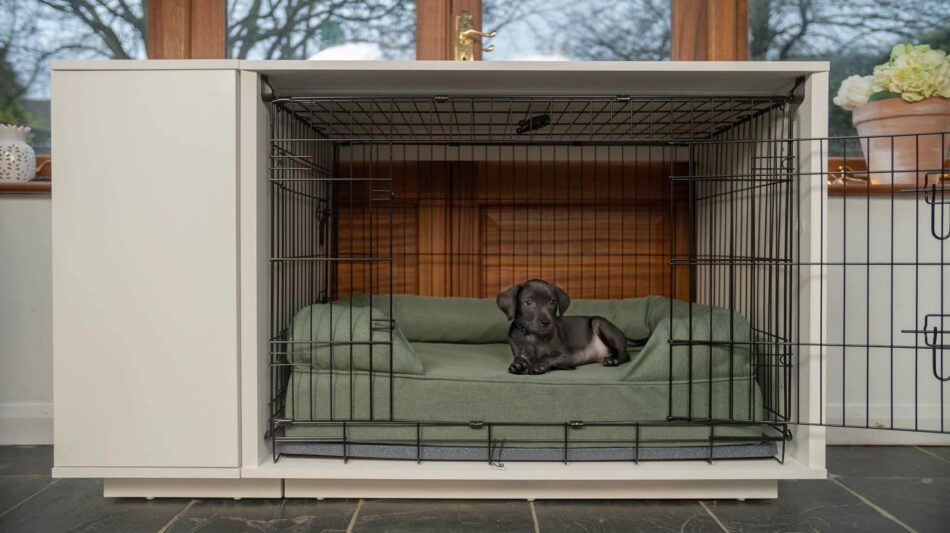

This entry was posted in Dogs
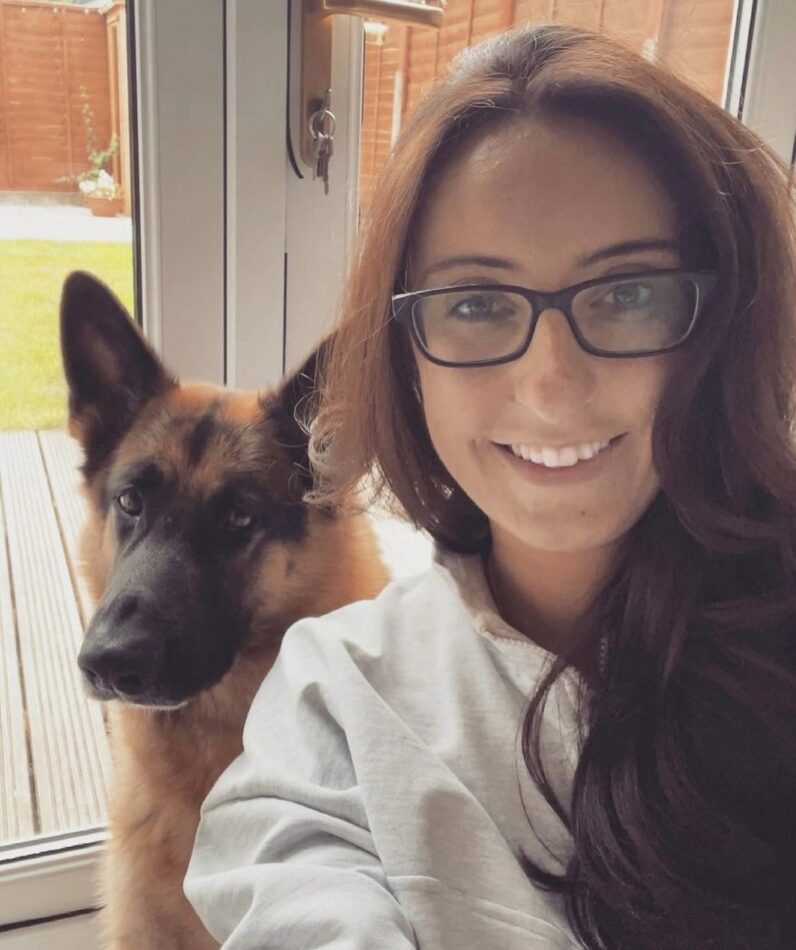
Canine behaviourist, Nikki Mather, explains our dogs’ adolescent phase and provides useful training advice on how to work through this stage successfully. Nikki, founder of Positive Steps Dog Training, is a qualified, force-free dog trainer (IMDT) and behaviourist (BCCS), predominantly working on cases including dog reactivity, separation anxiety and fear/anxiety-related behaviours.
Most new puppy guardians prepare well for bringing home a new puppy, from toilet training to mouthing to sleeping through the night. And, just when you feel like you’ve mastered this stage of your puppy’s life, they turn into a teenager!
The teenage phase is a testing period of your puppy’s life, bringing new challenges and frustrations to you as a dog guardian. During this time, your dog may seem like they are purposely ‘ignoring’ your requests, they may become a little more anxious than before, or they may completely fly off the handle – but let’s take a look at what is really going on for our pups during this stage, as well as training tips to help you navigate this challenging time.
What is adolescence in dogs?
The transition from puppyhood into an adolescent “teenage” dog can happen anytime from around 6 months, lasting until your dog reaches anywhere between 18 – 24 months. During adolescence, dramatic hormonal changes take place within your dog’s body, resulting in a rewiring of their brain.
During your dog’s teenage months, you may notice an increase in their confidence, becoming increasingly motivated to explore and interact within the external environment. Alternatively, your once seemingly confident pup may begin to exhibit more anxious, fearful behaviour. Regardless of the change, it’s important to remember that although older, your pup still lacks the experience and skill set to appropriately navigate our world and, therefore, is sometimes unable to rationally manage their emotions and reactions.
Behavioural changes you may notice
1. Increased anxiety (and therefore reactivity)
Most new puppy guardians are well aware of the importance of appropriately socialising your pup between 8-16 weeks. However, most aren’t aware that our dogs enter into a second fear period generally between 6-14 months.
During this stage, you may notice your once confident pup has become a little more anxious and fearful, which could result in an increase in reactive behaviour towards external triggers they once may have been comfortable around, such as people and other dogs.
In order to work through your dog’s second fear period successfully, it is important to continue their socialisation training to ensure they are continually exposed to triggers at their pace. This will help continue to build positive associations that will create the foundations of a well-adjusted, confident adult dog.
2. Regression in training
We’ve all been there – we bring home a little puppy and immediately begin working on their loose lead skills and recall training. All goes seemingly well…our pups don’t want to leave our side so their lead work is perfect, their recall is second to none and they hang onto every word we say!
Then, the teenage stage hits, and it feels as though everything goes out of the window and our young dogs know nothing!
You’re not alone in this – ‘regression in training’ is completely normal. During the adolescent months, our dogs’ hormone levels change, and they can become much more confident in themselves and their environment. You may notice they listen to you less, they run over to distractions outdoors and they don’t come back when you ask – super frustrating! During this stage, our dogs are often conflicted when asked to do something, driven predominantly by their uncontrolled impulses.
When you begin to notice this regression, don’t panic! You just have to go back to basics in your training – in other words, you need to make it easier for your dog! This might mean you go back to working with a long training lead when teaching recall, or you may give your dog a little more distance from distractions to help them focus on you more. Take the time to work through your dog’s regression, training at a pace they can handle, and you’ll come out the other side with an adult dog that is an absolute dream to have!
3. Ignorance!
During your dog’s adolescent phase, you may become increasingly frustrated by how much they are choosing to ignore anything you ask of them – you may even call this stubbornness! Whilst this may seem like your dog is actively choosing to defy you, it is more effective to try and understand where this ‘ignorance’ has come from.
When they were pups, YOU may have been the most exciting, rewarding thing for them. Now that they’re a little older, their motivators and preferences will change, and you’ll need to up your game in order to keep their attention in a stimulating world.
To do this, you can try using high-value treats to reinforce behaviours you like, such as fresh meats, doggy pate or cheese (within moderation). You can also use chase toys, tug toys or balls to better engage your dog and reward behaviours you like. The more you reward a behaviour, the more likely that behaviour will be repeated!
4. Increased energy levels
As a pup, your dog will have needed around 16-18 hours of sleep per day. Now that they are a teenager, their sleep requirements will reduce, so they may become more active around the home for longer periods of time (more time to get up to mischief!)
Now more than ever, it is important to ensure you are meeting all of your dog’s needs, including physically, mentally, socially and breed-specific. Consider the quality of your dog’s walks, how often do they engage their brain in stimulating activities such as sniffing and problem-solving, do they have ample opportunities to engage in play with you and other dogs (when suitable), and are their breed-specific needs to chase/dig/search etc. being met?
If your dog is restless and exhibiting unwanted behaviours, there is probably an unmet need that needs to be addressed!
5. Nuisance behaviours
The adolescent developmental stage is when most young dogs begin to show troublesome behaviours, such as excessive barking, jumping, lunging, destruction or biting/nipping. Such behaviours are typically a result of your dog working through some pretty big emotions, frustration sometimes making top of the list.
If you notice your dog showing unwanted behaviour, ask yourself WHY? There’s always a function behind our dog’s behaviour – is there something they want, is there a need not being met, are they bored, tired, frustrated etc. Once you understand why the behaviour is occurring, you’re better equipped to implement efficient training solutions!
Quick tips to help satisfy your adolescent dog:
- Let them sniff on their walks as this will tire them out mentally.
- Provide indoor mental stimulation such as enrichment boxes, snuffle mats and treats rolled into a towel!
- Balance high-energy activities with brain work-outs e.g. 5 minutes ball throwing followed by 10 minutes sniffing to help reduce adrenaline.
- Ensure you’re engaging with them through games, training or just cuddles – our dogs are social creatures!
- Teach them how to settle using a settle mat and ensure they have a quiet, undisturbed space to relax around the home.
Remember, your dog’s adolescent period will not last forever. Be patient and guide them into making more appropriate choices to help them co-exist peacefully with you. ‘Bad days’ are inevitable, but your hard work and consistency will pay off, and the relationship you’ll build with your dog along the way will be the most rewarding of all.
If you’re struggling and would like some professional help, please do get in touch with us at Positive Steps Dog Training.
This entry was posted in Dogs
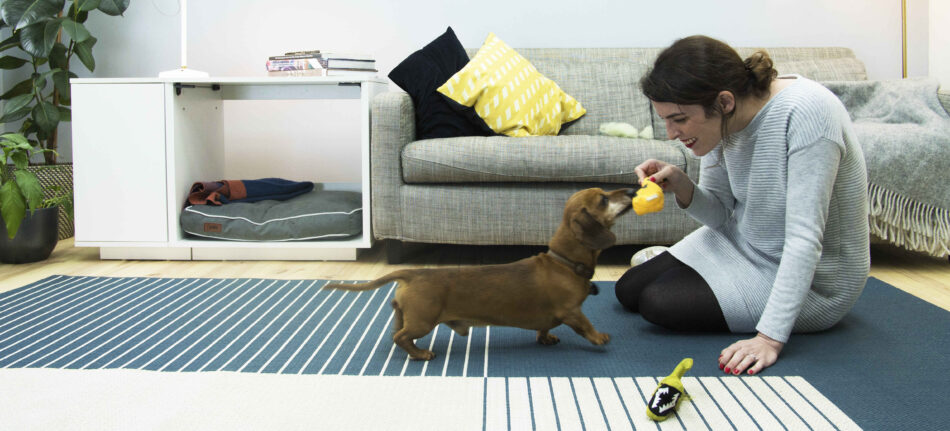
Come rain or shine our dogs need their daily walk… or two, right? But what happens when this just isn’t possible? Sometimes we can’t take our dogs outside for a number of reasons, be it extreme weather conditions, or maybe you’re in isolation. Regardless of your explanation, it’s a good idea to know how to keep on top of your dog’s physical health, as well as having an understanding of how to keep their brains engaged and stimulated whilst inside the home, even for when you’re able to take them for their regular walks again.
Although exercise with your dog inside most definitely does not substitute for your dog’s activity outdoors, there are a number of ideas to help you and your pup out, should you find yourselves in a situation when you can’t leave your home.
Physical Exercise Ideas
Tug of War
Tug of war is a great game to encourage your dog to exercise indoors. Before making a start it’s important that you’ve taught your dog the release command, to ensure they know how to drop their tug toy as soon as you ask them. Once they’ve mastered this, you can begin playing with a durable tug of war toy, which you can use to tug back and forth with your pup.
Create an Obstacle Course
An obstacle course is a fantastic way to get your dog active around the house. You can make your course as simple or complicated as you want, and you’ll probably already have most of the equipment you need in your home! You can use a children’s play tunnel for your dog to run through, or even make your own using an old cardboard box, with treats to lure your pooch in. If you’ve got carpeted stairs, you can incorporate these into the course for your pet, or even use a hula-hoop or PVC pipes to have your pup jump through. You can really get creative here, as long as your dog is supervised at all times.
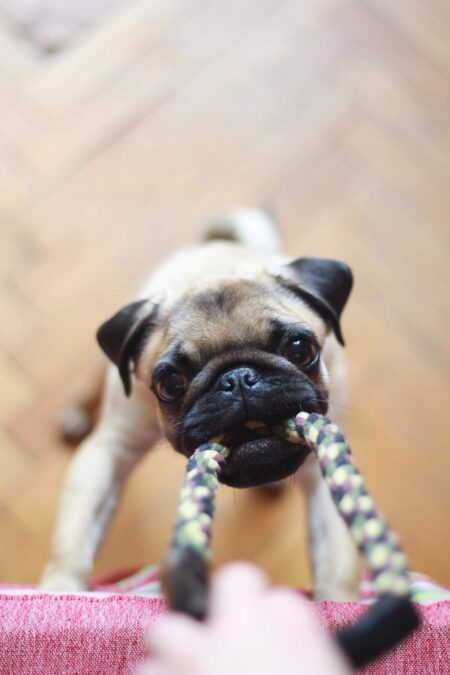 Play Fetch in The Living Room
Play Fetch in The Living Room
This is definitely one for a rainy day when it’s impossible to even play with your furry friend in the garden. This classic game is one form of indoor exercise that is bound to tire out your dog, but be wary of this one if you’re lacking the space inside (or a great aim!). Remember to always use a soft ball toy to play this game to avoid any damage.
Get a Treadmill
Treadmills aren’t just for humans! If you have a particularly active dog breed that you know is dependent on being outdoors for hours of running, a treadmill is a great way to get their physical activity in and tire them out. It’s not advisable to use a treadmill built for us to take your dogs on, so if you’re considering this option to exercise your dog, you can invest in a purpose built dog treadmill. That way you can be assured that your pup will stay safe, knowing the machine is suitable for their weight and joints.
Mental Exercise Ideas
Try Out Puzzle Toys
Exercising your dog isn’t all about physical activity. Physical and mental stimulation are both incredibly important, with mental stimulation being able to use as much energy as physical exercise for dogs. Invest in a puzzle toy like the Treat Maze Interactive Puzzle, a brain game that will really get your pup thinking, providing them with plenty of mental stimulation. Watch as your dog uses up their energy as they work out how they can get to their treats.
Play Hide and Seek
Although hide and seek can involve a lot of physical exercise, it also requires a lot of brain power from your dog. Find a hiding space and have your dog wait until you call their name to find you. When your pup finds your hiding place, give them lots of praise or reward them with a treat.
Teach Your Pup New Tricks
Teaching your dog new tricks is an activity you can do without hardly any space, and something that will keep them mentally engaged. You can begin teaching your puppy basic commands as soon as they arrive home, usually at eight weeks old. However, as your pup gets older these can become more complex and fun.
Scent Game
You can try hiding some of your dog’s favourite treats to really get their nose (and brain) working. This game is perfect for mental enrichment for your pup, and also one you can try to incorporate into your obstacle course. Before hiding your pup’s treats, teach them the “find it” command, so they know what to do when you release them to go on their scent hunt. You can first hide a treat under a towel and then build this up to hiding treats around the house.
Being stuck indoors is no fun for you or your dog, but hopefully after a bit of inspiration you’ve been able to pick up helpful tips to make it a lot less boring before you can be out and about again.
This entry was posted in Dogs
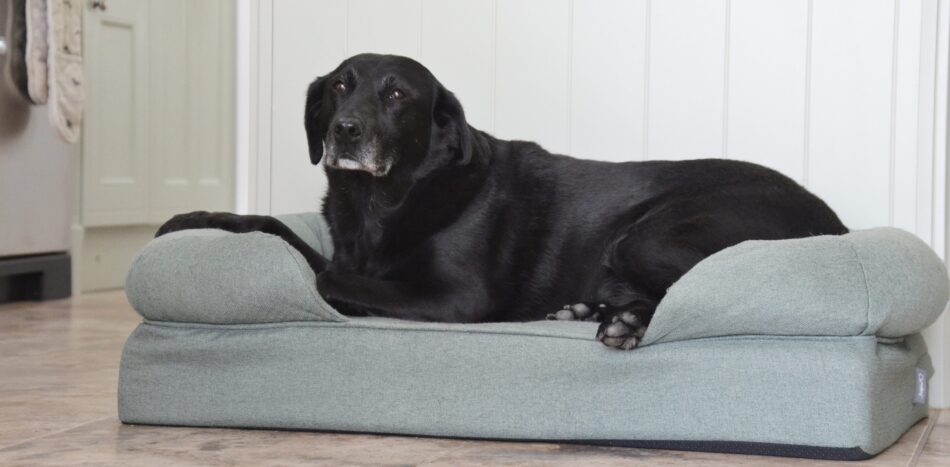
Dogtor™ Adem, Dog behaviourist & trainer, discusses everything you need to know about dog beds, which types may suit which breed and age of dog, and why we might see our four-legged best friends exhibit certain behaviours in and around their beds. Read on to learn more!
What should I look for in a dog bed?
A dog bed should be comfortable for the breed type, age and size of your dog. If you have an older dog, they might benefit from an orthopedic or memory foam bed, such as the Omlet Bolster Bed with premium memory foam mattress, which gives support by gently moulding around your dog. A puppy, on the other hand, might benefit from a bed that can absorb water if, for example, a bowl of water is accidentally knocked over by them or they ‘toilet’ on their bed area whilst still being house trained. For puppies, you may also want to consider a type of bedding that is comfortable for them but not too precious or expensive due to the higher risk of this bedding being chewed or damaged as they play and explore. For me, it is also important to choose a bed that is robust and can be easily washed. Again the Omlet Bolster bed is a great choice with this feature! This not only helps the environment by limiting the need to frequently replace a smelly or very worn dog bed with a new version, but also ensures any accidents or dirt brought into their dog bed area can be easily cleaned away, keeping their bed area hygienic and inviting. You could also consider covering your dog’s bed with a removable and washable cover, particularly in the winter months.
What type of bed might suit my breed of dog?
Certain breeds might need more cushioning than others to stay comfortable and limit their potential for developing sores or sore patches, for example greyhounds who are considered more ‘boney’ than many other breeds. Some breeds might also like to curl up, for example a husky or some of the smaller breeds, whilst others prefer to lay on their side and stretch out, for example hounds such as deer hounds, greyhounds, and lurchers. An owner should consider how their individual dog likes to lay and relax and choose a suitable bed with this in mind.
The time of year can also have an effect on where your dog chooses to sleep. To ensure your dog remains comfortable, you can adapt their bed to suit the season by adding extra blankets or even cool mats to your dog’s bed. If you’re looking for a cozy blanket, Omlet’s Super Soft Dog Blanket is definitely a winner for those cooler months where some dogs might like to ‘snuggle up’. For the warmer months of the year, you could try a cool mat instead of their usual bed if it is particularly hot! Omlet’s Cooling Mat for Dogs is a perfect choice, coming in a range of sizes to suit many breeds.
I have observed my dog ‘digging’ their bed, why is this?
This is a natural instinct derived from the need to ‘clear the ground’ or an area of insects and potentially small rodents and reptiles. Ancestors of our pet dogs might need to do this in order to make the area they are choosing to reside in safe for them to lay down in. Some dogs, such as those in tropical climates that predominantly live outside or live as ‘street dogs’, still use this instinctive behaviour to keep themselves from being bitten and stung. This act of ‘clearing the ground’ may even have benefits in preventing parasite infestation. Whilst in Mauritius last year, I witnessed a young street dog clearing an area and whilst watching I noticed that she stopped in her tracks and became very observant as she had disturbed a small scorpion in some leaves. Without this act of digging and clearing, this dog would have undoubtedly been stung by this scorpion.
Dogs may also dig because they sweat through their paws, making the act of digging and ‘circling’ in an area another way of spreading and leaving their scent. This is something we commonly know as ‘marking’ and usually associate with the image of dogs urinating up lamp posts!
Finally, dogs may also dig naturally on hot days and in hot climates in an attempt to try to remove hot surfaces (e.g. baked earth). This helps them to reveal a cooler surface to reside in. In addition, wild canids such as arctic foxes and wolves, may dig to avoid extreme weather such as high wind, the cold (e.g. snow), and storms. Again, this act helps to keep them safe as well as assists in regulating their body temperature. Although seldom needed in the pet dog world today, this instinctive behaviour still remains in part in our domesticated dogs.
How can I train my dog to sleep in their bed?
A good training instructor or behaviourist will have this on their training syllabus, helping owners to teach the ‘go to bed’ command.
If, however, your dog is reluctant to sleep in their own bed you should investigate why. Firstly consider, is the bed area provided the most attractive sleeping area available to your dog? Positive reinforcement such as offering treats in this area can help to make their bed area a more positive and inviting place to reside, as can ensuring the bed is comfortable for their breed type and age (as discussed above!) Secondly, you might want to evaluate if your dog potentially has a behavioural issue such as separation anxiety that is preventing them from wanting to sleep in their own bed. If you believe this to be the case, you should seek help from a certified behaviourist to address this issue and help to build your dog’s confidence in being physically away from you.
How can I stop my dog destroying their bed?
Think about your dog’s life stage. A young puppy may chew a bed as they explore with their mouth and enjoy the texture on their teething gums. In this instance, it would be advisable to buy a bed that does not contain lots of small parts or stuffing that can be ingested. Similarly, you could pick bedding made of material that can not easily be broken down through the act of chewing. You can always buy a ‘nicer’ bed for your dog to use under your direct supervision until they have passed this life stage and have lost their baby teeth and gained all of their adult teeth.
If your dog is older and destroying their bed, perhaps when they are left alone for example, this could potentially signal that your dog is feeling stressed and is suffering from separation anxiety, for which behavioural advice should be sought to enable your dog to recover from this issue.
Similarly, chewing and destroying of beds can also sometimes indicate that your dog is bored. To combat this, you could look to try to tire your dog more effectively before leaving them alone, which will encourage them to rest more in your absence. You should also ensure that your dog is not left for long periods of time by themselves. Just like us, dogs are social mammals and need company. As well as ensuring your dog is appropriately exercised and is not being left for too long, you can also offer your dog something to do for some of the time you are away from them. For example, you could leave them something else to chew that is safe and made for this purpose. Consider leaving them with a hard chew food item or a food dispensing toy filled with tasty treats for them to try to get to!
I hope you have found the above information useful. Wishing your beautiful pooches the most restful of snoozes!

Dogtor™ Adem
Dog Behaviourist & Trainer
www.dog-ease.co.uk
@dogtoradem
This entry was posted in Dogs
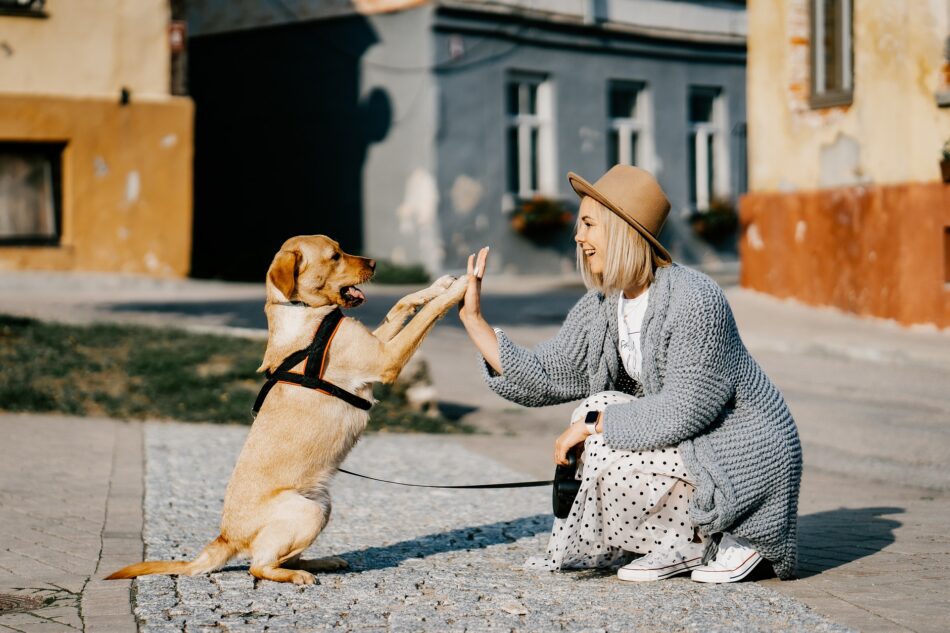 A dog who has been taught positive behaviour will be your best friend – fun, affectionate and reliable. It’s straightforward teaching your dog this canine version of positive thinking, but it won’t happen unless you lead the way.
A dog who has been taught positive behaviour will be your best friend – fun, affectionate and reliable. It’s straightforward teaching your dog this canine version of positive thinking, but it won’t happen unless you lead the way.
There are many ways of teaching a dog the rights and wrongs of living in the human world, and that extends to how they interact with other dogs and the world around them. In this article, we reveal the five rules of thumb for all dog owners – whether you’re training an adult dog or a puppy.
Encouraging Positive Behaviour in Puppies
Puppies recognise when we’re pleased or displeased. It’s all part of their instincts, and in the wild this instinct helped their wolf ancestors find their place in the pack very quickly. Learning their place in the big wide world is all about positive reinforcement.
1. Puppy Treats. Dogs of all ages love food and will put lots of effort into doing what you want them to do as long a there’s a yummy treat at the end of it! This means treat-based training can be used for everything from toilet training to basic obedience training and that all-important early socialisation. The message here is simple and timeless – do this right, and you’ll get a treat!
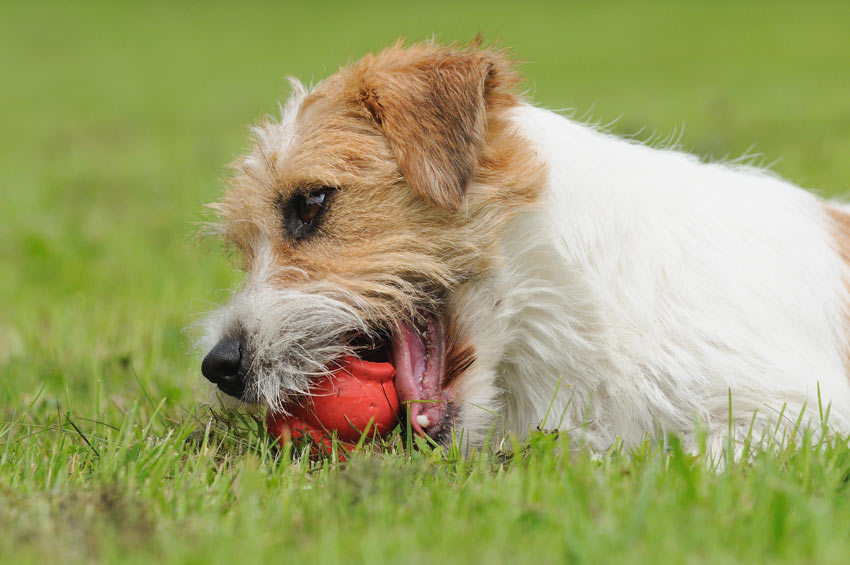 2. Affection. This is arguably even better than a food treat! Bonding with a puppy involves physical contact in the form of belly-rubs, back stroking and lots of gentle words of affection and encouragement.
2. Affection. This is arguably even better than a food treat! Bonding with a puppy involves physical contact in the form of belly-rubs, back stroking and lots of gentle words of affection and encouragement.
3. Fun and games. Tug-of-war, fetch and simply running around the garden with you are games that puppies love. What’s more, they strengthen the bond and love between you and your pet, and that’s the perfect groundwork for training and encouraging positive behaviour.
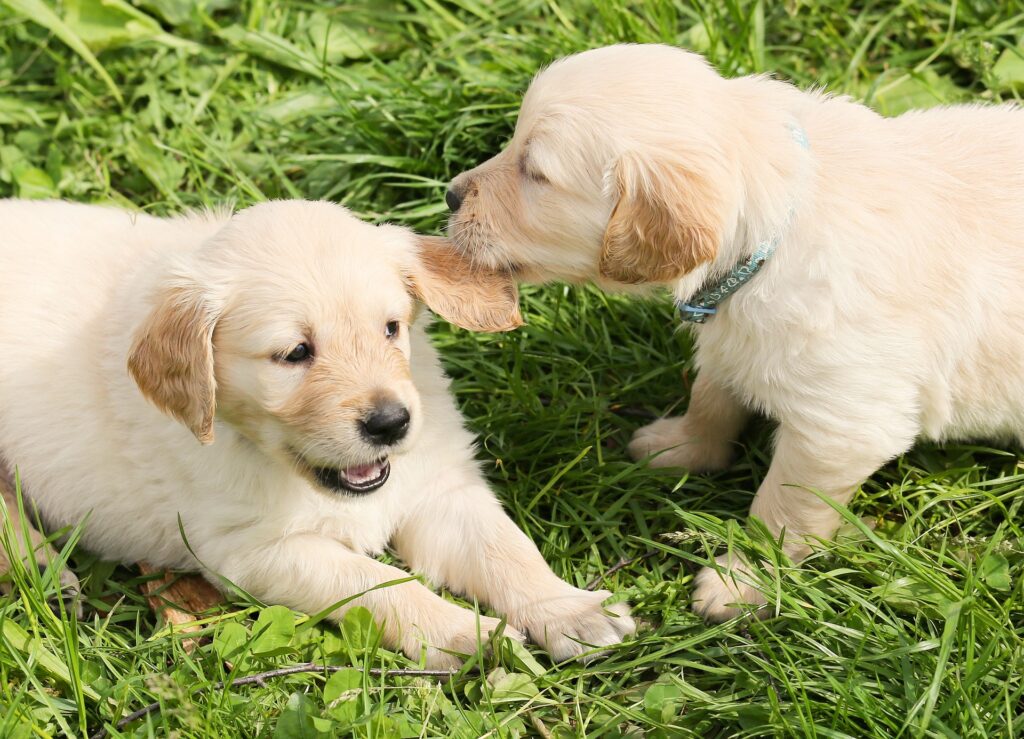 4. A trip to a favourite place. This is a great treat for dogs, and can be as simple as a trip to the park, or perhaps to a favourite street for an on-lead walk, or maybe a shop that sells some of those yummy treats! If this is being done as a reward for good behaviour, make sure your puppy knows it by telling them what a good boy/girl they are as you put the lead on or get into the car!
4. A trip to a favourite place. This is a great treat for dogs, and can be as simple as a trip to the park, or perhaps to a favourite street for an on-lead walk, or maybe a shop that sells some of those yummy treats! If this is being done as a reward for good behaviour, make sure your puppy knows it by telling them what a good boy/girl they are as you put the lead on or get into the car!
5. Puppy playdates. Starting these early is a great way to socialise your puppy, and that provides the basis for all the positive behaviour training. Young dogs love meeting each other – it’s not going to be a quiet morning out with your furry friend, but it’s one that will give him or her essential social skills.
Encouraging Positive Behaviour in Adult Dogs
The basics are simple. Positive reinforcement rewards a dog for good behaviour and ignores, rather than punishes, undesirable behaviour. Punishment will only lead to confusion and fear in your dog, reducing your chances of achieving the full benefits of positive-behaviour training.
Here are the five ways to make everything go smoothly, no matter which dog breed you have.
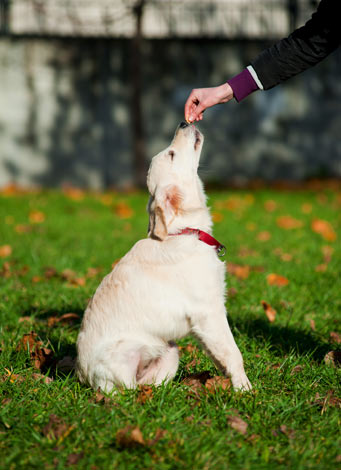 1. Keep it simple. One-word commands are better than complex ones. We’re talking here about sit, come, sat, etc. Save the long-winded exchanges for praise and affection! A training session based on simple commands and treats is a great start for encouraging positive behaviour. Which brings us to…
1. Keep it simple. One-word commands are better than complex ones. We’re talking here about sit, come, sat, etc. Save the long-winded exchanges for praise and affection! A training session based on simple commands and treats is a great start for encouraging positive behaviour. Which brings us to…
2. Treats. Just like puppies, adult dogs will be well and truly ‘reinforced’ if treats are involved. Some breeds are more food-obsessed than others, but all types of dog will quickly learn that good behaviour results – at least in the early days of training – in a yummy treat.
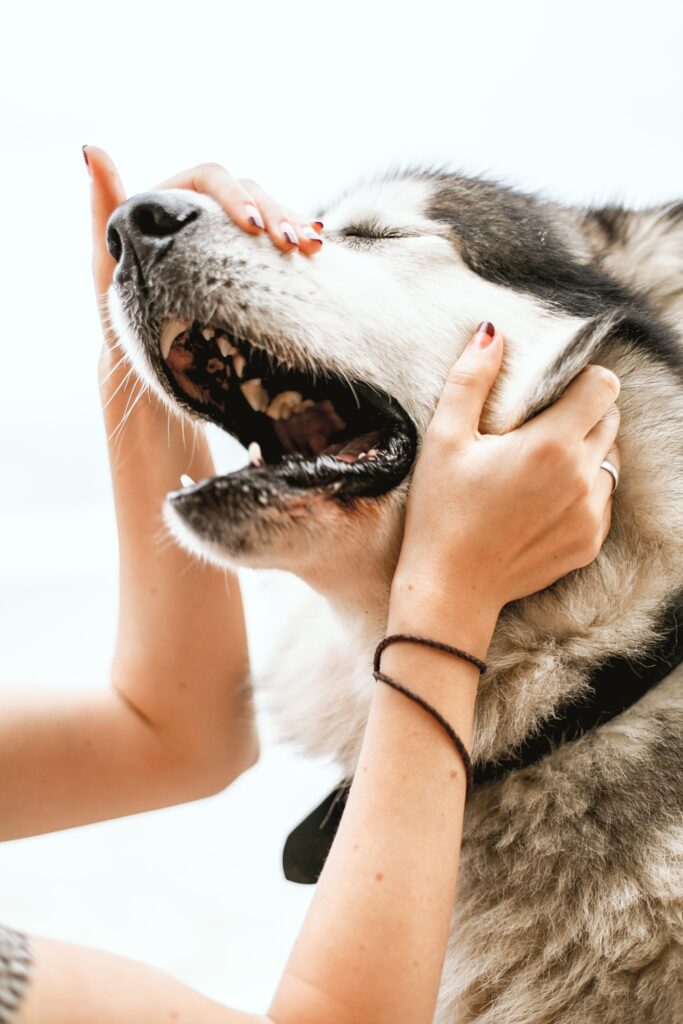 3. Quality time. Dogs are social animals by instinct, and they will thrive in human company. Once you and your pet are the best of friends, the positive behaviour training will be much easier. If there’s any nervousness or standoffishness in your dog, they will be less able to take on board the things you’re trying to teach them. So, keep up the contact, and play with them every day.
3. Quality time. Dogs are social animals by instinct, and they will thrive in human company. Once you and your pet are the best of friends, the positive behaviour training will be much easier. If there’s any nervousness or standoffishness in your dog, they will be less able to take on board the things you’re trying to teach them. So, keep up the contact, and play with them every day.
4. Make it fun. A long session of ‘sit, lie down, stay, come’, etc. will soon become boring for a dog. A short session of command-based training followed by a bit of fun, however, will make your dog look forward to the sessions every time. After five or ten minutes (depending on your dog’s stamina), round off the proceedings with a game or a walk. The dog will soon realise that “If I do this tricky bit, I get that fun bit afterwards!” It’s a trick that works just as well with young children – “Finish your homework, and then we’ll go out on the bikes!”, that kind of thing.
5. Get everyone involved. Once your dog has grasped some of the basics, other members of the family, or friends, can reinforce the good behaviour by running through some of the training with your dog. Your pet will then learn that positive behaviour is part of their general lives and applies in all situations with all people.
This latter point is the ‘quantum leap’ for a dog – the idea that positive behaviour extends beyond their immediate owner to the big wide world around them. Getting them to this point takes time, there’s no doubt about that, and some breeds are a lot easier to train than others. However, once the work has paid off, you’ll have a doggy best friend you can be truly proud of!
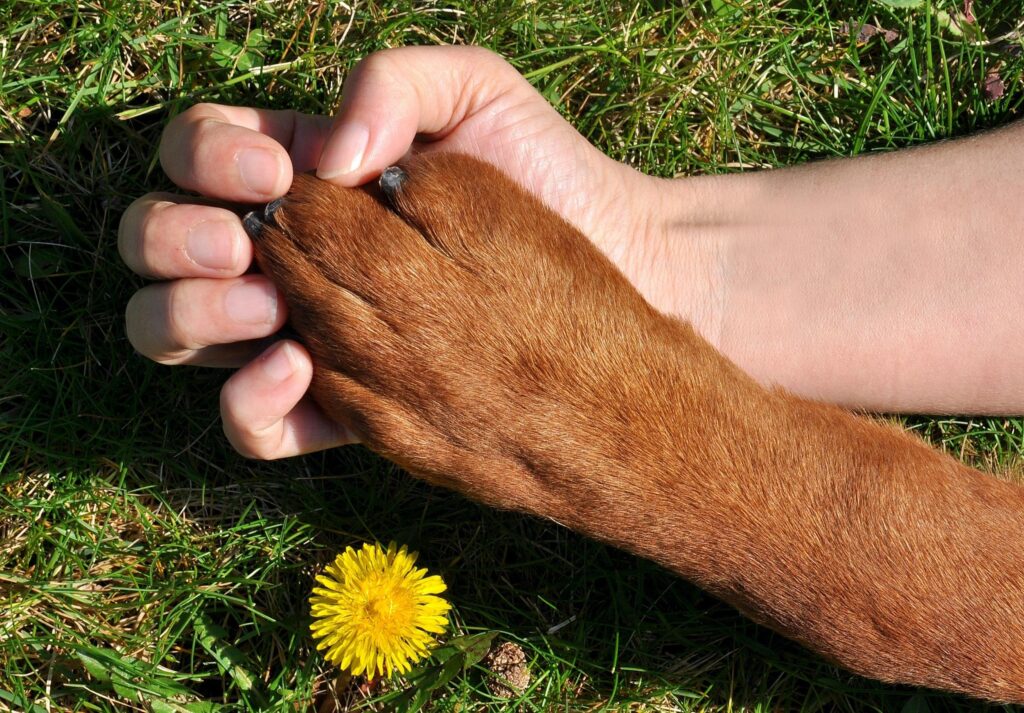
This entry was posted in Dogs
Dogtor Adem, founder and owner of Dog-Ease, is a dog behaviourist and trainer with over 15 years experience working with dog owners and their canine best friends. In this blog post, Adem provides us with helpful tips on preventing dog theft, and what to do if you experience dog theft yourself.

With dog theft on the rise, it’s only natural that we might feel worried about taking our furry family members out and about at the moment. I think most of us can agree that if anything should happen to them, we would feel devastated. So, I have put together my top tips for keeping your dog safe from theft when both at home and out and about. Following on from this, I’ve also put together some tips on what to do should you find yourself in the awful position of your dog having been stolen. I hope you never have to refer to them, but they might just help you be reunited should you find yourself in this unfortunate position.
MY TOP TIPS FOR PREVENTING YOUR DOG THEFT
START AT HOME
By this I mean you should review your current security measures at home. Start by ensuring gates and fences are secure and avoid leaving your dog in the garden unattended. You may also want to ensure your dog cannot be seen by people passing by when you are out of the home. You can do this by making them a base in a room away from any windows that can be easily looked into or even by closing the curtains on these windows when you are out.
MAKE SURE YOUR DOG IS MICROCHIPPED
It is not only law to have your dog microchipped, but it is also best practice. If your dog is ever separated from you a simple scan of their chip in their neck area should reunite you pretty quickly. Keep your dog’s microchip details up to date. It’s usually really easy to do this over the phone or online.
ADD AN ID TAG TO YOUR DOG’S COLLAR AND CONSIDER A GPS TAG ALSO
By law, your dog should have an identification tag attached to their collar when outside of your home. This makes it really easy for you both to be reunited without needing your dog’s microchip to be scanned. You could also consider attaching a trackable GPS tag to your dog’s collar. There are many on the market to choose from and these can be purchased online, if not from your local pet shop. Some also have fun features to use on a daily basis such as tracking your dog’s activity levels.
TEACH YOUR DOG THE RECALL COMMAND
Teach your dog the recall command and make coming back to you a fun game that you can play throughout your walks together. Offer a tasty treat or engagement in a game such as fetch each time they return to you. This makes them more likely to want to return to you, seeing the recall as a fun part of your walk. Head over to the Blog page of my website www.dog-ease.co.uk/blog/ to watch a tutorial on how to begin this training if you haven’t already had a chance to.
KEEP YOUR DOG’S ATTENTION
Make it fun for your dog to stay close to you on your walk if you are letting them off lead. For example, you could practise off lead heel work as you walk, offering a tasty treat as a reward for their focus, or play recall games. Taking a special toy such as a ball can also help to keep your dog’s attention and focus with them chasing and retrieving during your walk.
KEEP YOUR DOG IN SIGHT
Following on from keeping your dog’s attention, avoid letting your dog go out of your sight on a walk or leaving them unattended outside a shop, school, or even in your car. The less opportunity for them to come into contact with strangers without you also present, the better.

WALK WITH OTHERS
If possible, walk with a family member or socially distanced with a friend. You could also try to walk in public areas where other people are walking and present too. Pick times of the day where other people are likely to be around and walk in daylight if possible. If this is not possible, try to walk in well-lit areas. Safety is often found in numbers and the more people that are around the less likely you may be to be targeted.
CONSIDER TAKING ANTI THEFT DEVICES WITH YOU
Consider taking an anti-theft alarm or another similar device on your walk with you, even a whistle is better than nothing to be able to attract attention with. You could also try to keep your mobile phone handy to use if necessary, although it’s best to not allow your mobile phone to distract you from what is going on around you as you walk. See the next tip!
STAY ALERT
Following on from the tip above, stay alert and be vigilant on your walks. Watch out for any unusual activity or people in the areas you might typically walk. It is best to limit your use of any electronic devices such as your mobile, even to listen to music. The more aware of your surroundings you are, the more likely you will be to spot anything not quite right.
AVOID CLOSE CONTACT WITH STRANGERS
Avoid letting people you don’t know pet your dog or telling people you don’t know any details about you and your dog. It’s nice to be friendly but be vigilant about the information you share.
BE LESS PREDICTABLE
If you’re particularly concerned, change up your routine frequently. This makes it harder for anyone ‘watching and waiting’ to predict and plan to ‘bump into you’ on a walk.
PREP OTHERS WHO ARE RESPONSIBLE FOR WALKING YOUR DOG
If you use a dog walker, ensure you ask them what steps they are taking to avoid your dog from being stolen. You can also ask that they remain vigilant in securing your property when returning your dog to your home and ask that they look out for and alert you to any unusual activity.
USE SOCIAL MEDIA AND LOCAL NEWS TO YOUR ADVANTAGE
Check local social media pages and local news for up-to-date information on what is going on in your area. Often any worrying incidents are reported by residents with details of suspicious people and even sometimes vehicles too look out for.
BE MINDFUL OF WHAT YOU SHARE ONLINE
Sharing your location and details of your pet on non-private forums such as on non-private social media pages can alert potential thieves to your where abouts. Make sure you are mindful of what you share and where you ‘check in’, with or without your dog.
WHAT SHOULD YOU DO IF YOUR DOG IS STOLEN?
In the awful event that your dog is stolen, here are some tips to help you find and be reunited with them.
REPORT THE THEFT IMMEDIATELY
Report the theft immediately to the police and ensure it is recorded as a crime rather than as a lost pet. You should receive a crime reference number for your records.
CHECK CCTV
Check all available CCTV footage in the area your dog was stolen from to gain evidence of any people needing to be identified or vehicles that may have been involved. You might also want to check in with neighbours and those in the local area to see if anyone has any footage from their own security systems – from Ring Doorbell footage to Dash Cam footage. Anything is worth a shot and could lead to identifying something or someone.
CONTACT YOUR MICROCHIP COMPANY
Contact the company your dog’s microchip is recorded with and register your dog as stolen. If your dog is scanned by a vet elsewhere, they should then be alerted to this and your dog returned to you.
CONTACT LOCAL VETS
Contact all vets in the local area to let them know of the theft. Provide a photo of your dog if possible and include details of any markings or particular features that they have so they can identify them more easily.
MAKE THE PUBLIC AWARE
Make other people aware of the theft by putting up posters stating your dog has been stolen, with your contact details on them. You should also post a copy of such posters, or an equivalent, on social media sites. If you ensure that the settings of your post are set to ‘public’ you can ask others to share your post and reach a much wider community. The further your dog’s details are shared, the more chance you have of your dog being identified and returned to you!
DON’T GIVE UP
Don’t give up hope! Keep sharing your dog’s details far and wide. Someone somewhere might know something and help you to be reunited.
I hope you found the above tips useful. Stay alert and keep safe!
Dogtor(tm) Adem
Owner of Dog-ease Training & Behaviour
www.dog-ease.co.uk
This entry was posted in Dogs
 It can be tricky to decide whether or not your dog should wear a collar or a harness for walks. A lot of it depends on your dog himself, from the breed to his age and activity level. No matter what type of breed you have, one thing’s for sure, they all need to go out on walks! The main two types of leash attachments that you can use for your dog are harnesses or collars.
It can be tricky to decide whether or not your dog should wear a collar or a harness for walks. A lot of it depends on your dog himself, from the breed to his age and activity level. No matter what type of breed you have, one thing’s for sure, they all need to go out on walks! The main two types of leash attachments that you can use for your dog are harnesses or collars.
Whether you just got a new dog and aren’t sure which to use, or you are looking to switch things up, it’s important to know the pros and cons for both dog harnesses and collars before making a decision.
Collars
Pros
Dog collars are the best when it comes to controlling aggressive dogs, puppies or dogs who are in training. It gives confidence to the owners where they can let their dog walk without any fear. It comes with many direct benefits while providing better control to the handler. Dog training is one of the most important reasons for buying a dog training collar. It is one of the first dog training tools that an owner would need. It helps your dog to successfully overcome obstacles. It also helps to guide your dog and secure his attention if it has a short attention span.
Your dog may get a bit rowdy during the walking session. It’s the dog collar that can correct its behaviour when it is misbehaving. Dogs can go on jumping fences, playing in woods, or getting into mischief; so, you should consider durable dog collars with breakaway fasteners.
The main benefit of collars is that it’s more convenient than a harness. They can be left on at all times as opposed to a harness, which should only be worn during walks and it’s much easier to snap a collar on and off than a harness.
Another great benefit of wearing collars comes with the metal ring where you can attach your pet’s ID tag or name plates with your address, your phone number, veterinarian office phone number or the tag of the dog registration organisation where your dog is registered for identification in case he or she gets lost.
Are you a fashionista or do you love to express individuality? You can even use a bow tie or bandana/scarf as an attachment for the collar.
Cons
What can go wrong when you lead a dog by the neck? Quite a lot, it turns out.
The safety of your dog’s neck plays a vital role here. If dogs constantly pulls against their collar, they can injure themselves or reduce the airflow they are getting. Some smaller breeds, like miniature dachshund or poodle, are prone to collapsing tracheas, and a rough tug on the collar can quickly turn into an emergency situation.
Other dogs’ necks are as thick as their heads, e.g. pugs and whippets, so slipping out of a collar is effortless. Even if you have a tough mutt or working dog, repeated pulling on the neck can lead to thyroid damage or spinal injuries over time. Please avoid using collars to walk dogs with medical issues such as glaucoma, a history of proptosed eye, neck injuries, or spinal malformations.
Collars should also not be used on toy breeds and brachycephalic breeds, such as Chihuahuas, Chinese Crested, Italian Greyhound, Maltese, Toy Poodle, Yorkshire Terrier, Bulldogs, French Bulldogs, Boston Terriers, Pugs and Boxers.
Harnesses
Pros
The main benefit for using a dog harness instead of a dog collar is the control you have over overly excited dogs. If it comes to safety and security, harnesses are generally better at preventing accidents because they fasten more securely around your dog’s body and are simply the most secure, and most comfortable way to hook your dog up to his leash. It covers your dog’s chest, shoulders, and upper back, which disperses pressure over a larger surface area whereas collars give you better control over your dog. While dogs can easily slip out of their collars and potentially run into traffic or another person’s yard, harnesses offer much more security and safety.
A good harness will reduce pulling, increase your control over your pup, and decrease stress on his neck and joints. Bonus points: because it secures closer to the dog’s centre of gravity, a harness gets tangled in the leash less and helps prevent jumping.
There are different kinds of harnesses, starting from cool, cute or practical, such as bags where you can put some treats or eco-friendly waste bags
When it comes to specific breeds or diseases, a harness has a better function for your dog:
- Brachycephalic breed: These breed dogs typically have flatter faces, “shortened head” and refers to the short nose and flat face of dogs like Pugs, Shih Tzus, Chihuahuas, Chow Chows, Pekingese, French Bulldogs or Bulldogs. Respiratory issues may be better managed with a harness.
- Tracheal collapse: This is a medical condition where the trachea will fold in on itself causing trouble breathing and a cough. Please avoid using a collar because it applies further pressure and can even worsen the condition.
- Risk factors for spinal problems: A condition called intervertebral disc disease (IVDD) makes long-bodied breeds such as dachshunds very prone to slipped disks. By using a harness you can take pressure off the neck and back and help prevent further damage.
- Orthopaedic disease: Dogs with orthopaedic disease can have a hard time getting up to walk so a harness can help you get them up and move around more easily.
Cons
Harnesses are just less convenient than collars for hoomans. A collar can just slip on, but harnesses take more time to fasten.
Harnesses can be uncomfortable: Harnesses are bulkier than collars, so they can be more uncomfortable for your dog. Some dogs really don’t like wearing harnesses, so it can take some time for them to get used to it.
Harnesses may not have a place for carrying an ID tag. It’s best to get a harness with a ring for a tag—or use both a collar with a tag and a harness when out walking.
If your dog wears weather protection or due to some illness needs to wear clothes, a harness might be a bit more of a disadvantage than a collar. The clothes might cover the harness ring(s), so that you’re unable to put a leash on. Alternatively you can attach the harness over the clothes but make sure -in general- it’s neither too tight nor too loose.
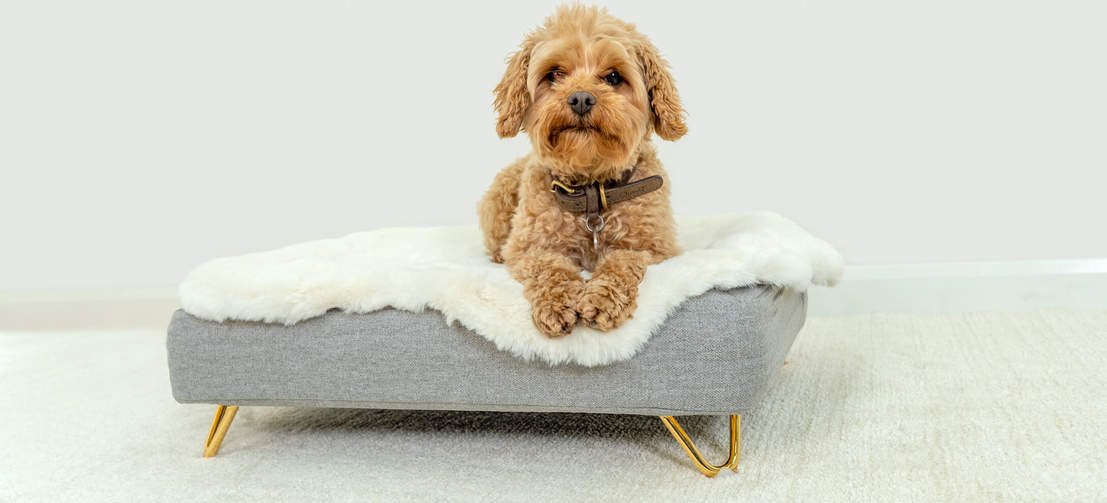
The Sheepskin Topology Topper provides dogs with a luxurious place to rest.
Summarising
So, collar or harness – which one is now the better option for your dog? There is no general answer to this question as it always depends on the breed and health of your pooch and the use of the item. But please, always keep in mind:
- Collars are less restrictive on movement, which is good for working dogs who are running around all day. Collars are also better for dogs that don’t pull and can calmly walk by your side.
- Harnesses are better for overly excited dogs as you have more control over them.
- Smaller dogs and brachycephalic breeds should avoid wearing a collar.
- It is absolutely advisable to get your puppy used to both, collar and harness.
- If you want to transition an older dog or even a pup from collar to harness be patient – the adjustment phase may take some time. Bring some treats along on your first few harness walks to distract your dog from that unfamiliar feeling, as well as associate the change with positive rewards.
- It also depends on the use of the item. If you want to have a walk with your buddy or take a ride with him in your car (to fasten the seatbelt), it is recommendable to use a harness. If you just let him out in the garden or take him to your friends’ house, a collar is totally fine – same goes with dog kennels.
To sum up, harnesses are usually the best choice for walking dogs because they don’t put pressure on the neck. But collars are generally more comfortable and have a place to hold an ID tag. At best, let your buddy wear both: If you can’t attach a tag or name plate to the harness, use a collar for the ID tag and a harness for the leash.
This entry was posted in Dogs
Teaching your dog tricks is not that difficult. Your pet is very intelligent and in fact, training a dog is much easier than training other animals! We know that sometimes it’s hard to find inspiration and ideas, so we’ve put together a list of 5 must-do tricks to teach your dog!
Dogs are very attentive to their environment, they are able to learn several commands and quickly assimilate what you tell them. However, you will need to be patient and rely on rewards and encouragement to get results. Never spend more than 10 minutes on an exercise per day and make sure you are in a good mood to praise your dog. Frustration must be put aside or your dog will feel it and may perform less well.
Do you know that the tricks and exercises taught to your dog will stimulate him physically and mentally? They also allow you to enrich the bonds that unite you.
This list is far from exhaustive and we assume that your dog already knows “sit”, “down” and “stay”.
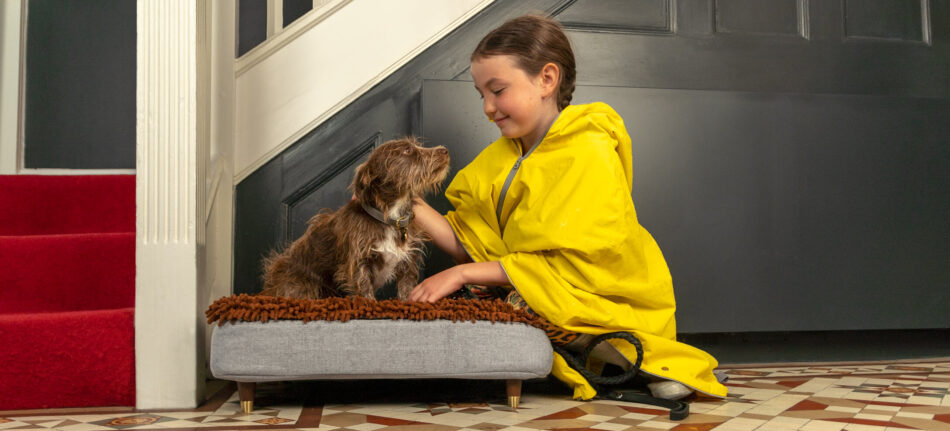
1- Pawing or shaking hands
As you may have noticed, dogs sometimes instantly raise their paws when they ask for food. So this trick is not fundamentally complicated to teach your dog. You just have to find the right word, the right signal to give your dog to obey.
Omlet’s tip: Keep the treat in your hand, show the treat to your dog and tell him to wait. Slowly lower your hand and when your dog lifts his paw, make the sound you want to associate with the command. “Shake”/”Paw” is an easy sound for your pet to remember, so use short words. Add emphasis to the word and enthusiasm. Once the dog has the treat in his mouth, congratulate him with a pat.
Gradually, you won’t need to lower your hand too much. Each time you repeat this command, make sure you raise your hand a little higher so that your dog’s paw is raised to chest level. Repeat with the same paw.
Once your dog has mastered this command, you can train him to lift the second paw. However, the sound/word should be different from the previous one. Use the word “other” for example.
Afterwards, you can easily teach him the “high five” command. You will have to show him your palm and encourage your dog to go even higher with his paw. Once your dog does this, reward him.
2- Rolling over
This is a trick that many owners want to teach their dog, but many don’t know how.
Omlet’s tip: First, you get your dog to “lie down”. Place a treat in your hand and let your dog smell the treat without giving it to him. The goal during this exercise is that your dog should not get up. If it does, don’t get upset and try again.
Use your hand to guide your dog. You must make the movement and the trajectory that you want your pet to follow. Use your hand to turn your dog’s head and make a backward movement. As your dog tries to turn his head to grab the treat, he will end up rolling. Repeat the exercise several times, but don’t spend more than 15 minutes doing it. You can come back to the exercise later in the day.
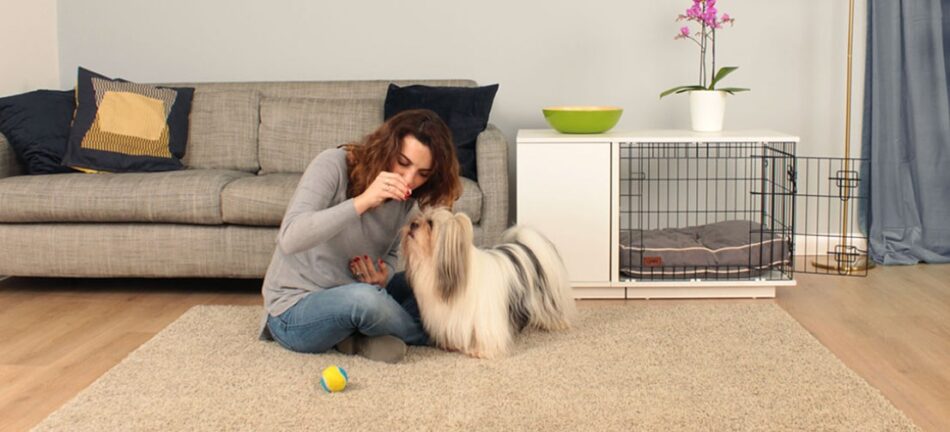
3- Speak
This command can be easy to learn for expressive dogs but a little more complicated for calm dogs.
Omlet’s tip: Excite your dog a little with your voice. Ask him to sit and put a treat in your hand. Wave your hand but don’t give him the treat. Repeat the word/command you want him to learn several times, perhaps “bark” or “speak”. Wait for him to bark or whine. After a few seconds give him the treat and praise him. If you want your dog to calm down, repeat the word “quiet” or “enough” and walk away.
Never encourage or praise your dog when he barks out the window or at people. Barking can be frightening to some people.
4- Dance
Good news, your dog can also learn to dance! Maybe he can even dance better than you…
However, this trick is easier to learn for small dogs. Larger dogs have a harder time standing on their two hind legs. This trick is also not recommended for dogs with back problems.
Omlet’s Tip: Ask your dog to sit. Put a treat in your hand and put your hand over your dog’s muzzle slightly backwards. Your goal is to get your dog to sit on his hind two legs, and he will only do so if he sees no other way to get his treat. Once both front legs are up, praise and encourage your dog. Repeat this trick several times until he can quickly stand on both paws.
Once he does, you can move on to the next step. When your dog is on his two feet, hold the treat and move your hand in a small circle over his head. After a few seconds your dog should be able to twirl or at least move both paws on the ground. As you do the movement, remember to say the word you want to associate with the command. In this case that word could be “dance”. Once your dog has taken several small steps, give him the treat and praise him.
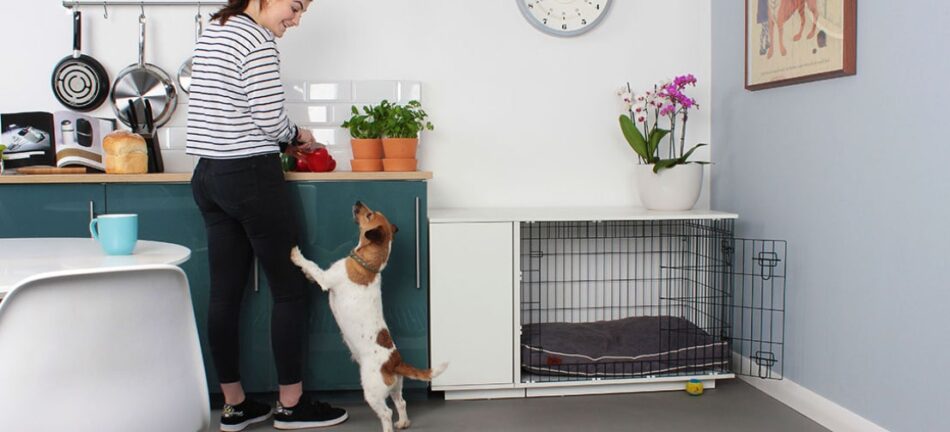
5- Playing dead
This is a challenging trick! It’s a great way to impress those around you, although it is not so easy to teach your dog, especially if he tends to be dynamic. However, nothing is impossible, you will just need more patience.
Omlet’s tip: As with the “roll over” command, have your pet lie down. Take a treat in your hand and put it over his head. Once your dog turns around, stop the process by asking your dog to stop moving. Repeat this process several times until your dog understands that it should not move. It is very important to say the word you want to associate with the command. For this trick it could be “Bang”.
This trick is not easy to describe, a video is sometimes worth a thousand words. We advise you to watch this video to teach your dog to play dead.
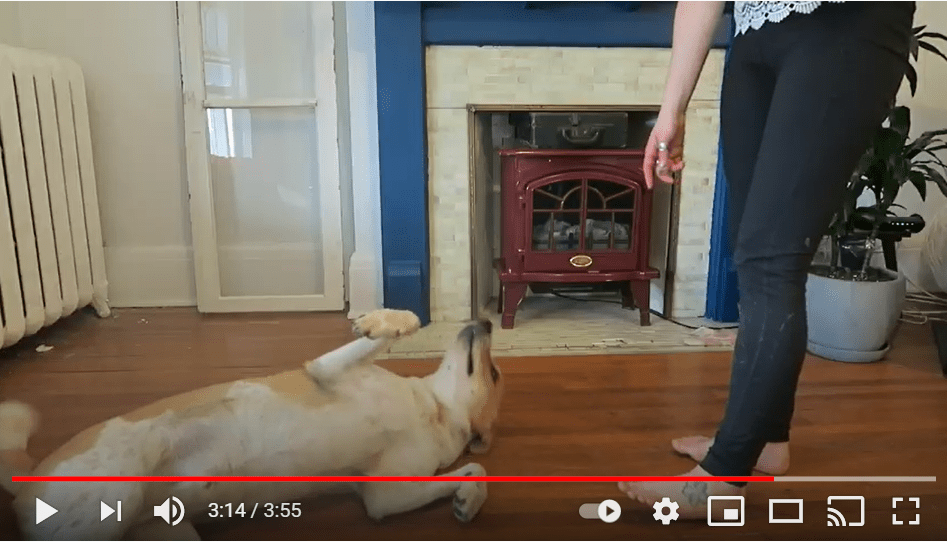
No matter what tricks you teach your dog, patience is the key and the only way to succeed and achieve your goals. Never forget to congratulate and encourage your pet. Finally, never force him. If he doesn’t want to learn a command or doesn’t understand it, don’t be obstinate. If you are afraid of doing the wrong thing, many resources are available on Youtube. Don’t hesitate to watch several videos to find the best technique for your dog.
Tag us on social media if you manage to do one of these tricks with your dog. We would love to share your pet’s achievements.
Tag us on Instagram omlet.au or send us your video to the following address: blog@omlet.com.au
This entry was posted in Dogs
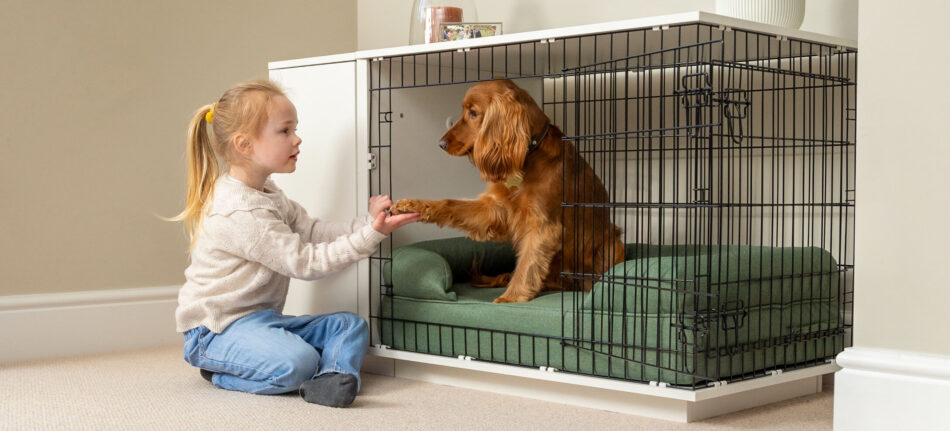
It’s a fantastic achievement to transform that over-excited, jumping, weak-bladdered puppy into a trained and trusted friend and companion. The transformation isn’t automatic, but comes about through persistence, organisation, and a few simple dog training tools.
1 – The training sessions are too long
This is definitely rule number one. Training takes a lot of canine concentration, and if you overdo it, your dog will become bored and/or impatient. And frankly, so will you. A training session should be between five and ten minutes. After that, it’s time out. You can resume the training with another 10-minute session an hour or so later.
2 – You’re getting impatient
You might think your dog is the cleverest pet you’ve ever met. But he’s still a dog, and not a human, so you shouldn’t expect miracles. A dog has to concentrate to learn new commands, especially ones that go against his natural instincts to run, bark, eat, and jump up to greet people. Many owners lose patience when, for the umpteenth time, the dog fails to respond to a command, lies down instead of sitting, forgets to wait when you tell them, and so on.
As soon as you lose your temper, your dog will sense the hostility and begin associating training with human anger. Understandably, he’ll not be too keen on taking part in future sessions.
3 – You’re on auto-repeat
If your dog fails to get the hang of a new command or trick on the third attempt, let it go. The mystified mutt will have made three incorrect guesses, and getting it right after ten attempts will not make the training stick. Revisit these ‘fails’ in later training sessions. Review your approach – was it too vague, too similar to another command, or have you fallen into the traps mentioned in points 1 and 2 above?
Similarly, if your dog fails to lie down when you say “lie down”, don’t repeat the command endlessly. It will tell the dog he doesn’t need to respond immediately, or it might make them think that the command for ‘lie down’ is actually “Lie down! Lie down! Lie down! Lie down! Lie down!…etc.”
4 – Everyone’s moody
If a dog is tired, grumpy, hungry, or expecting his regular walk, a training session isn’t going to go down well. The same applies to the human trainer – if you’re not in the best of moods, the dog will know, and neither of you will be in the best frame of mind for a training session.
5 – The default approach is punishment
There are two ways of training a dog – the old-fashioned correction-based method, and the much better ‘positive reinforcement’ method. The old way involved punishing a dog for getting things wrong, while the modern way is to reward them when he gets it right. Some owners mix and match the two methods, which can be confusing. The poor dog doesn’t know what’s coming next – a tasty treat or an angry gesture.
You should never shout your dog’s name in anger or as part of verbal punishment either, or he will come to associate his name with negative things.
6 – The training is inconsistent
Always use the same command words for each action, and make sure the dog performs the required action once he’s learned it. If you give the command and then let it slide if the dog doesn’t bother responding, you’re undermining the process. When training a dog you’re establishing sets of rules, and consistency is the only thing that’s going to make them stick.
If using a dog clicker, make sure the clock is reinforced with a treat. And don’t click loads of times for a single training action or behaviour, or the click will lose its meaning for the dog.
7 – The training is tailing off
If a dog learns new tricks and performs well in early training sessions, it doesn’t mean the behaviours will stick in his head forever. They need reinforcing every day over the dog’s early months, otherwise he will get rusty (a bit like you trying to recall those school French lessons 20 years later). Some owners make the mistake of thinking a paid-for training session can replace a year of regular and patient training. It can’t.
8 – Bad behaviour is being rewarded
If a dog is misbehaving, it can be tempting to shout their name angrily, and then reward them with a treat or attention when they decide to come. To a dog this means bad behaviour = reward. Ignore the bad behaviour as much as you can and draw a line by distracting the dog by asking them to sit or lie down (without using his name). You can then reward the good behaviour.
9 – You’re overdoing the treats
If dog treats are given too frequently or the portions are too large, your dog may decide, later, that he will only listen if there is food involved. There are also health issues involved with overdoing the snacks too. Praise, play and affection are just as important as food treats when training.
10 – A bull terrier can’t be a sheepdog!
There’s no single ‘best way’ to train a dog. It depends on breed and temperament. So, don’t rely on previous experience or the advice of another dog owner, if the dogs in question were completely different characters.
No dog is born pre-trained. But by avoiding these 10 common mistakes you’ll make the training much more effective, ensuring that everyone involved – human and dog – has a great time during the process.
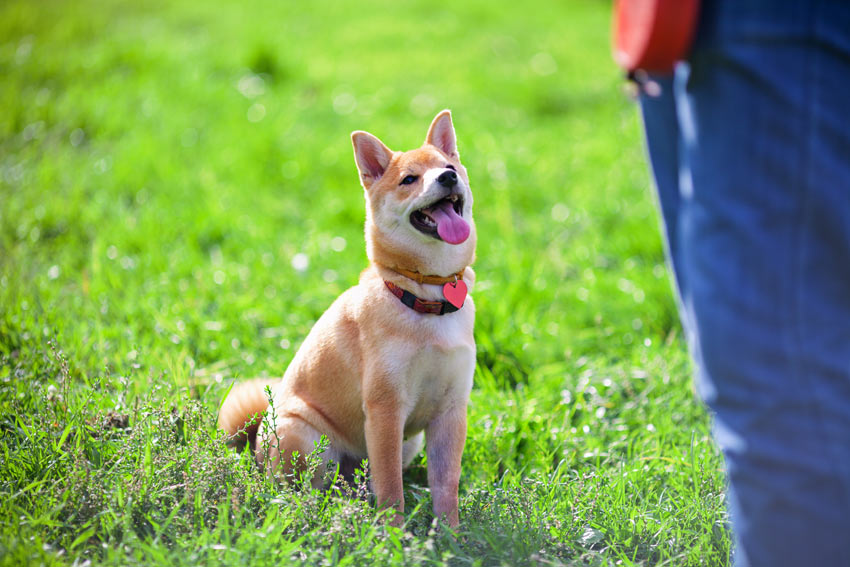
This entry was posted in Dogs
Richard Whately, 19th century Oxford academic and Bishop of Durham, taught his dogs to climb trees on the banks of the river Cherwell, and jump into the water from the branches.
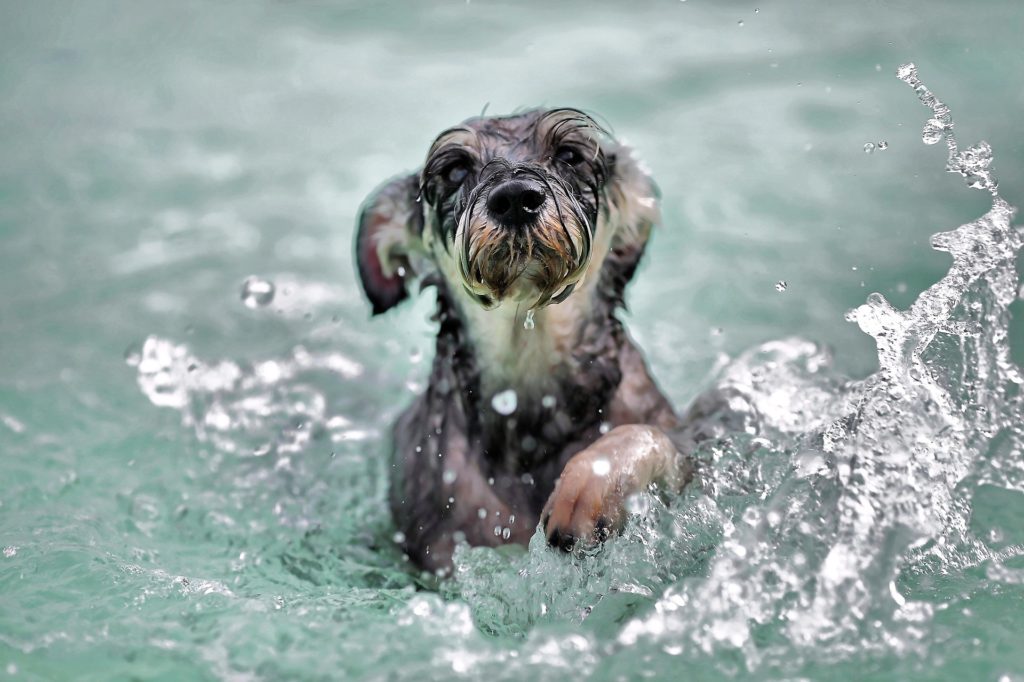
Fortunately, there are much easier ways of getting your pet dog used to taking a dip. But the key word in the previous paragraph is ‘taught’. Dogs are not born swimmers – they need teaching to a certain extent, even though most of them can stay afloat and doggy-paddle their way back to shore if you throw them in. But this is certainly not a recommended way to introduce pooch to the pond!
Many of them need no persuasion at all, and jump into rivers, ponds and the sea at every opportunity. Others are less eager to take the plunge, and some breeds are simply not built for the doggy paddle.
Sorting the Water-Dogs from the Non-Swimmers
Dog breeds with no snout, such as the Boxer, English bulldog, French bulldog, Pekingese and Pug, have great difficulties keeping their noses above the water. Their squashed muzzles – ‘brachycephalic’ is the proper term – means they are simply not built for swimming. Similarly, breeds with large heads and muscular upper bodies such as American bulldogs and Staffordshire bull terriers are not able to swim well, or at all.
Dogs with short legs find it hard to get very far in the water, even though they are capable of holding their heads above the surface. This applies to such breeds as the Basset hound and Dachshund.
Taking the First Dip
For dogs that can swim in theory but are a bit nervous, or simply not yet used to taking a dip, there are a few tips and tricks that should turn them into water dogs in no time.
- Choose a location with water shallow enough for you to easily rescue the dog if it starts to panic. Somewhere with a slope is ideal – a lakeside, a gentle river, or a coastal pool. A paddling pool at home is where many dogs take their first swim.
- Try to choose a quiet location, to minimise distractions and enable the dog to concentrate on the swimming lesson.
- Keep the dog on a long lead during these early dips.
- Take a stick or toy to tempt your dog into the water. If you go in first, the dog will be more inclined to follow. Some will leap in at once, others need more time to get used to the idea. Never drag, throw or otherwise force a dog into water.
- Doggy lifejackets can be bought, if your pet is particularly nervous, or if you’re not sure whether he will be able to swim very well, based on his body shape.
- Once the dog is used to being in the water, wade further out (tricky in a paddling pool!) and encourage him to follow you. It’s all about building confidence.
- To help a nervous dog get used to having its feet off the bottom of the pool or river, hold him by the middle for reassurance. Paddling with the front paws will be instinctive, and you can encourage use of the back legs by raising the dog’s back end slightly. He will instinctively kick his hind legs to regain equilibrium.
- Once the dog is paddling at the front and kicking at the back, he’s cracked it. You can now let him test his new skill – but stay close and be prepared to hold him by the middle again, in case he tires or suddenly panics.
- It’s a good idea to take a towel to dry the dog once it’s emerged from the water. Smaller ones in particular can get cold very quickly. Be prepared for a gentle soaking as your wet pet shakes the water from its coat!
For many dogs, the so-called training process will be over in a couple of seconds. Many hounds swim as naturally as they woof – breeds such as Newfoundlands, Poodles, Otterhounds, the various Retrievers, Spaniels, Setters, and – surprise surprise – Portuguese and Spanish Water Dogs, for example.
And rest assured – you don’t need to teach them to climb trees as well!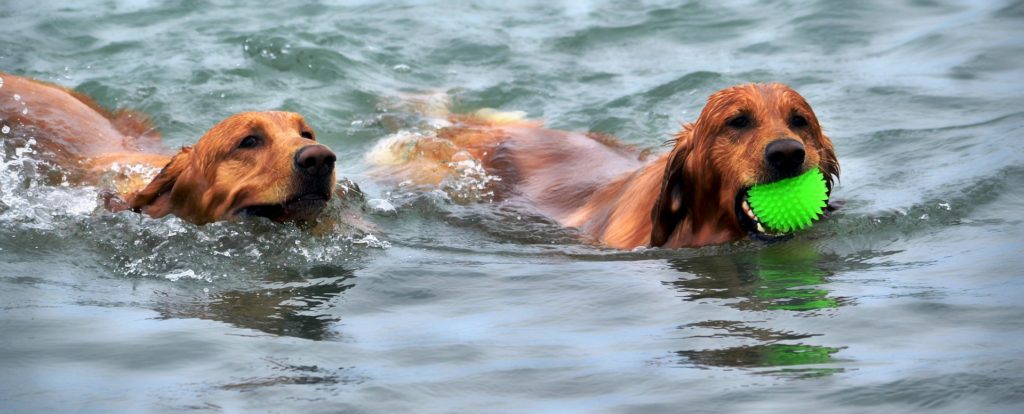
This entry was posted in Dogs
When we got our Miniature Schnauzer, we had already had a catflap in the back door for years. We soon realised that our little dog would easily also fit through the cat flap, and this would allow her to go in and out of the backyard whenever she liked. We decided to pin it open to see if she would even use it at all, and it turned out to be a hit. It worked perfectly and in the summer it was nice to have a light steady breeze from the door. But we all know, summer must come to an end one day. And it did.
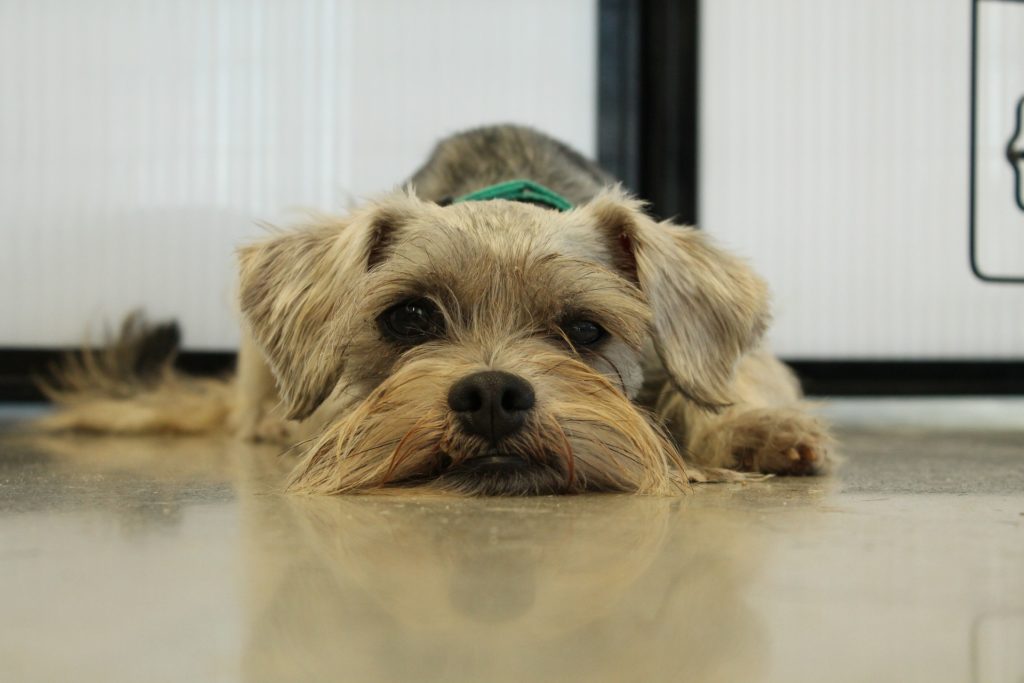
Winter came and with that freezing air blowing through the cat flap every day, all day. Unpinning the door meant having a sad little furry dog staring at it in disbelief “This used to be open all the time! Why is it locked now? And since when can the cat walk through walls?” The surprised look on our dogs face every time the cat appeared and vanished in the door was adorable and yet a little upsetting. How she wished to have the cats ability of passing through closed doors. And I wished that too. The comfort of going in and out whenever she wanted proved to make for a demanding dog, that needed help to open and close the door. Countless times a day.
Something had to change. As she didn’t understand how the door worked, we would have to show her and help her a little. I had used clicker training with other dogs before, and it was not only fun for me but also for the dog. Somehow we had never started training our newcomer with it, but now I dug out the clicker from the ominous corner drawer in the kitchen that hardly ever gets opened these days and made a plan.
Teaching my dog to use the cat flap!
My dog got the concept in a matter of hours and used the door by herself on the next day. Now she is young and very intelligent, but older dogs should also be able to learn this trick in no more than a few days.
Dog Clicker Training for flap doors – let’s get started.
Four essential things you need:
- A clicker
- Small dog treats or favourite toys
- A cat flap
- A dog (any dog will do…)
Clicker Training
If you’ve never heard about clicker training, then I will try to quickly introduce you to it. In short, clicker training conditions the dog through positive reinforcement to repeat certain behaviours. There is no such thing as active punishment in this training – “punishment” is shown in a passive manner by ignoring the dog. Dogs thrive on attention, they mostly don’t mind if it’s positive or negative attention – they often might not even be able to tell them apart. As long as their favourite humans interacts with them, that’s great news. Nothing is worse for a dog than being ignored. This is very useful when it comes to training.
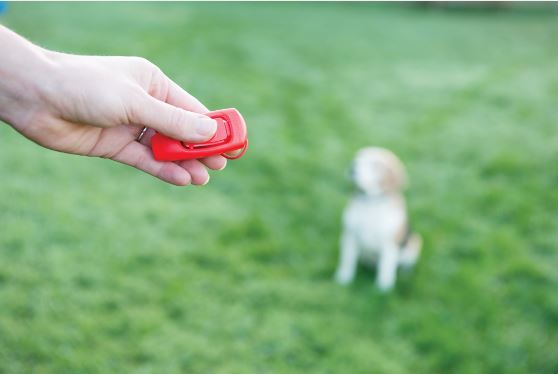
A click tells the dog “That’s exactly what I wanted you to do!”, then a treat follows. Click means treat – that is very important. Never click without it being followed by a treat – even if you click by accident. Click and treat go hand in hand. For most dogs, food treats work great, it is possible though to offer toys as a reward instead. Depending on the dog or the situation – I don’t take the clicker on walks for example, but I use the same method of “Do well and something good happens” to train my dog to, for example, stay sitting while I walk away. If she waits for my release command and comes running, we play with her toy. If she runs towards me without the command, we don’t play. That way she realises that, even though staying put might not be the most fun thing to do right now, but when that’s done, there are better things to come!
Step one
But let’s go back to the cat flap. If your dog already works with clickers, then great, skip this paragraph and read the next. For everyone who has never used a clicker with their dog, you will want to get your dog accustomed to the clicker, what it does, how it works and how he/she can actually “make it click” to get to that tasty treat.
I admit, I am very impatient and extremely lucky with my dog. I have done all this in fast forward mode, but generally it is best to take some time and be patient… Start with teaching your dog what the noise means. With your dog in the same room, click the Clicker. Your dog will most likely look up at the noise, but even if he doesn’t, make sure to click and immediately offer him a tasty, small treat.
Click again, give the treat.
Click again, give the treat. Repeat.
Click again – does your dog already look a little excited about the noise? Good, he is starting to realise that a treat follows the click every time he hears it.
This stage shouldn’t take long at all, and it’s soon time for the next step.
Step two
I thought about what skills the dog would need to open the door. To go through the door she would have to push it with her nose. So my next goal was to get her to touch the cat flap with her nose. The direct approach didn’t seem to be very successful, so I got a colourful Post-It note out of the cupboard. Maybe this isn’t necessary if you manage to make your dog touch the door with its nose. However, I wiggled the bright pink piece of paper in front of her nose and the first thing she does is give it a quick sniff. As soon as her nose touches the paper – CLICK! and treat.
Move a few steps away and show the paper, have the dog follow you, trying to touch the paper with its nose.
When the dog touches the paper reliably, you can now introduce a command such as “Touch” every time the dog does the action. Your dog will soon connect the motion of touching the paper with the word.
Keep this up until she touches the paper with her nose every time she sees the paper. Once this works well, phase three can begin – stick the Post-It on the flap door.
Step three
With the Post-It on the flap and the dog knowing the “touch” command, the next step was quite easy.
Ask your dog to touch the paper. Click when they do. Your dog might not push the door yet, so start to encourage him to touch it harder. Stop clicking if the nose only just touches it, instead click only when the dog put enough pressure on the door and the door slightly wiggles.
Does the door wiggle a little every time now? Great, then take away the click again until your dog starts to push the door harder.
This is a gradual process and encourages the dog to think about what you want it to do. When he figures it out himself, he learns a lot faster. Teach him gradually to not just make the door wiggle but to push so hard, that he has to stick his head through – at this point he will usually have realised that he can walk through as the door actually reveals what’s behind, and eventually you will be able to gradually change the slight door touching to actually walking through. Like magic!
Done!
My dog was finally able to make her way in and out of the house whenever she wanted – and we could finally take off the second layer of socks.
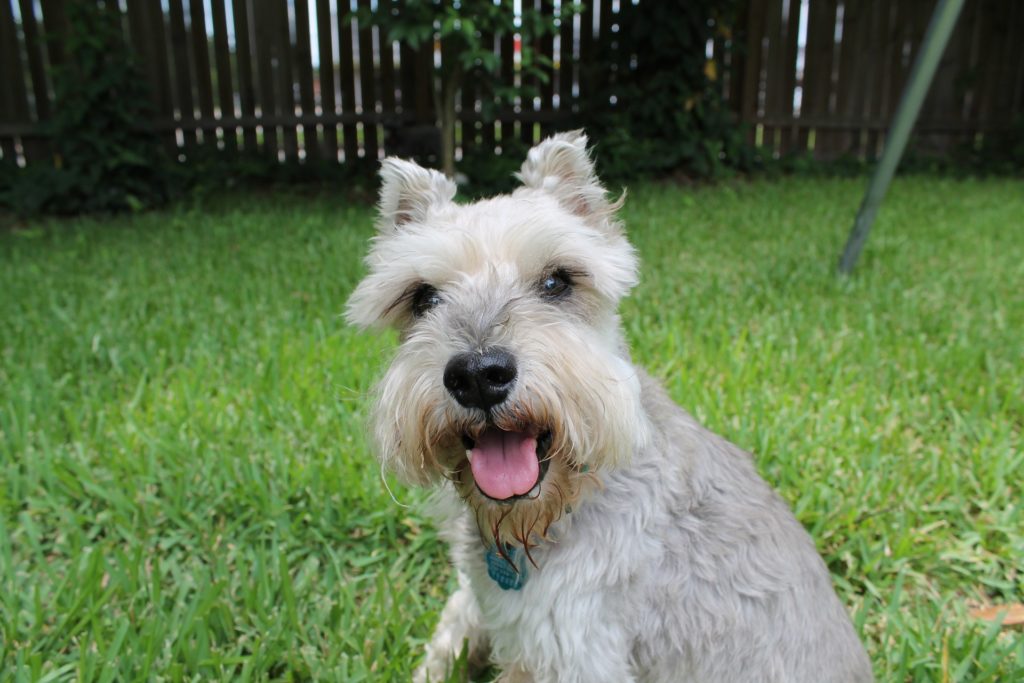
This entry was posted in Dogs
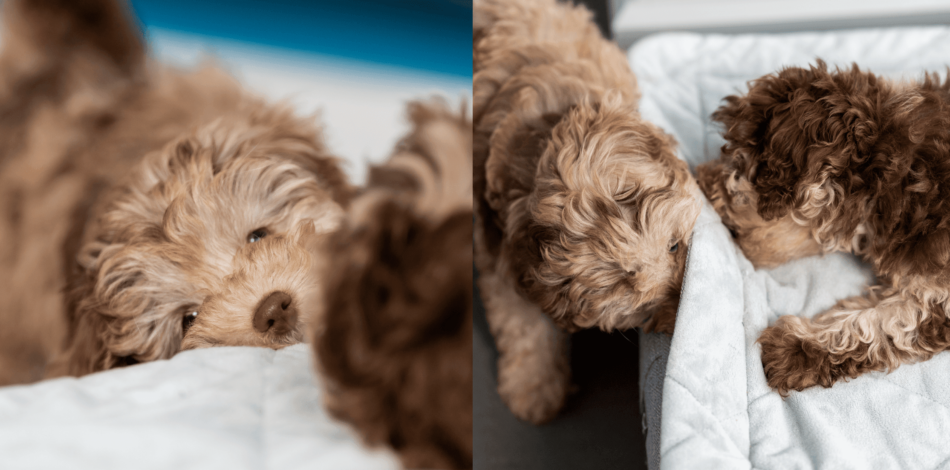
Bringing home a puppy is a very special time for everyone involved. And as with welcoming any new family member, your tiny, furry addition will inevitably change the dynamic of your household. With that, may come a few bumps in the road, also known as puppyhood. It’s important not to forget that as exciting as this time can be, it can be quite a daunting experience for you and your puppy. But, seeing the exciting world through the lens of your new forever friend makes the first few restless nights and teething issues all worth it. Here are our top tips for the first week with a puppy.
Take some time off work
Once you know when you’ll be collecting your puppy, it’s wise to take at least a week off work to stay at home. The first week will be a learning curve for you and your puppy, so it’s a good plan that you spend this time together building a bond, establishing a routine, and of course, having fun. It’s also an opportunity to start toilet training with your puppy, and since dogs of this age need to go potty a lot more frequently than their adult counterparts, you’ll need to be on hand to let them in and out of the home.
You should also have considered what your arrangements will be after the first week off work with your puppy. Will you be available to frequently check in on them? Is your partner going to be working from home? Most puppies under 10 weeks old can’t hold their bladders for more than an hour, so you should think about whether you’re able to make this big commitment with your current lifestyle. Fortunately, many workplaces are now dog friendly, so this might be an option for you as your puppy gets older.
First impressions count
The first few days with your puppy are crucial for establishing a strong and positive relationship with your pet. Take the time for everyone in the household to interact with your dog; playing, cuddling, and stroking them. Your new puppy may also be a little weary of you, to begin with. Be very gentle when you’re handling them and slowly you’ll be able to develop their trust in you and become familiar with your touch, voice and scent. Introduce them to a couple of dog toys and reward any good behaviour with dog treats.
Once the news gets out that you’re getting a puppy, friends and family are bound to want to visit, but take it slowly. Socialization is key to having a well-rounded dog but there will be plenty of time for others to meet your new furry friend. Introduce people to your puppy gradually and don’t forget that your pup shouldn’t be interacting with unvaccinated or unknown dogs, as well as visiting areas by freshwater, areas that are known to have a rodent infestation, or anywhere that unvaccinated dogs could have visited until they’re fully vaccinated themselves.
Be consistent with feeding time
Dogs love routine, so to maintain as much consistency as possible, it’s wise to follow the same diet as the breeder or rescue was feeding the litter. This is especially important while your puppy is already navigating a confusing change to their environment. Find out as much information as possible before you go to collect your puppy, so you have time to research and purchase the appropriate food. Once your puppy is home, follow the diet as closely as you can, and if transitioning to a different type of food, do so gradually to avoid upsetting their sensitive stomachs.
Find a dog bed that will stay with them forever
Puppies sleep…a lot. In fact, they can spend up to 20 hours of their day snoozing away but after a day filled with zoomies and making mischief, it’s hardly surprising they need somewhere super comfortable to get some shuteye. It might be tempting to let your dog sleep on your bed, especially with their irresistible puppy eyes but in the long run, they’ll thank you for providing them with a bed designed just for them.
Omlet’s Topology Dog Bed was built to last. With a memory foam mattress base that moulds to the shape of your dog and a choice of removable toppers for you to easily wash clean, the Topology is what dog bed dreams are made of. For puppies, The Quilted topper is perfect, made from an ultra-durable, hard-wearing material that even razor-sharp puppy teeth can’t rip through. Plus, you can even add a puppy pad beneath your topper for an extra layer of confidence.
Getting your puppy’s bed right in the first week means that they’ll soon associate it with their safe space from a young age. And since you can choose from 3 sizes, you can find the perfect fit for when your dog is fully grown. This bed will truly take your four-legged friend through from puppy to prime.
Use a crate
Dog crate training is invaluable, and can be started during your puppy’s first week at home. Since you’ll be unable to monitor your puppy’s every move day and night, using a dog crate to use for short periods of time means that you’ll be able to keep them out of harm’s way when you cannot be with them. Dog crates are also a very useful training tool, and provide nervous puppies with a den they can call their own.
You can even add a dog bed, super soft puppy blankets and a couple of dog toys to your puppy’s crate to create a cosy space. As your puppy gets older and begins travelling in the car, you can even take their crate with you so that they’re secure and safe on their journey.
Omlet and your puppy
We’re committed to bringing people closer to their pets, which is why we designed and carefully crafted the Omlet Topology Bed and dog crates with puppies in mind. The joys of puppyhood also come with a few challenges but with this advice and Omlet’s innovative products, the first week with your new puppy can be made as stress-free as possible.
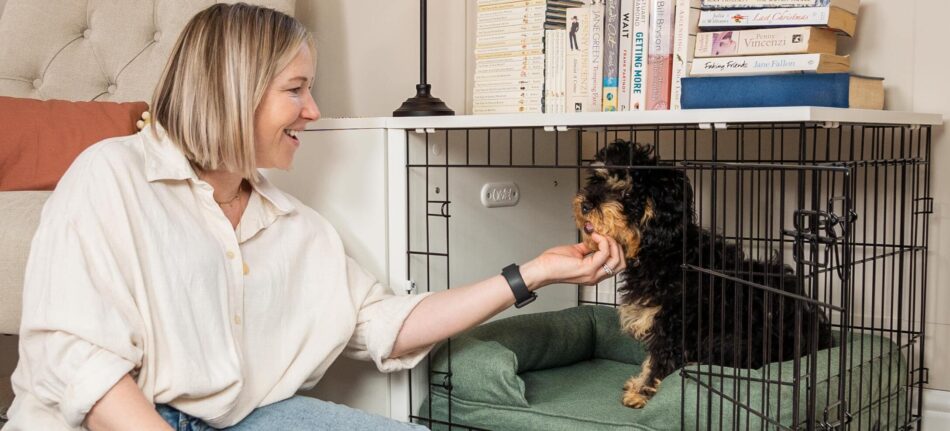
This entry was posted in Dogs
You’ve seen it on some TV programmes or driven past small-holdings and seen canines and chooks living in harmony. Maybe they are a working dog? Maybe they are a family dog? How do they do it? We have put together 7 expert tips to help you introduce your new dog to a flock of chickens.
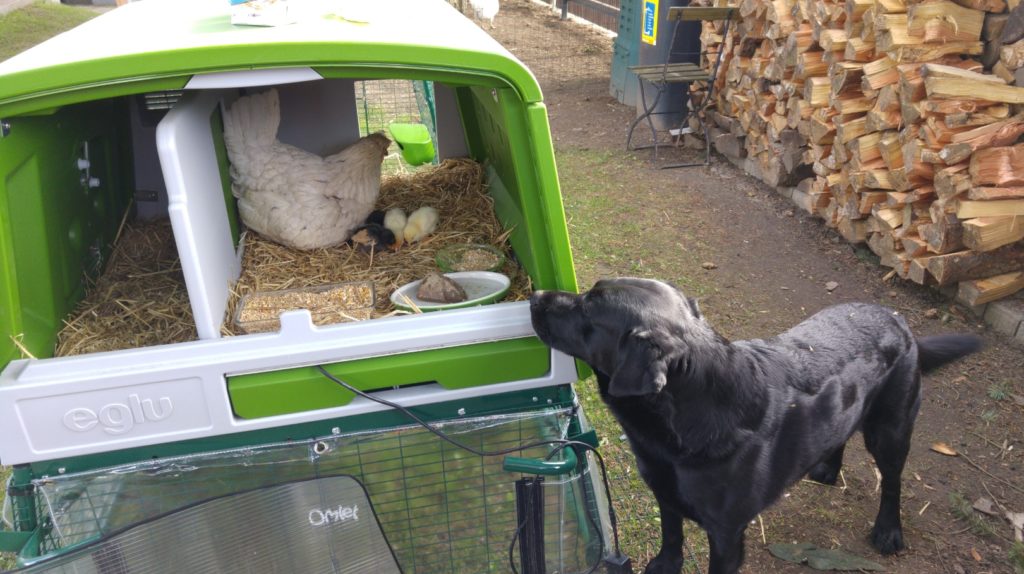
Understand How Dogs and Animals Learn
Our canine companions, on the whole, are super intelligent and trainable, providing we know how they learn and what we need to do to train them. Introducing them to our chooks can be done and co-habiting harmony does exist. It’s through this small thing we call desensitization. Stay with us for a short Psych 101 and we promise it’ll be worth it.
Desensitization is a process where, through graded exposure, an emotional response is diminished and adapted to a specific stimulus.
Now, what the heck does that mean I hear you yell?
In short, you expose your dog to your chooks, from a distance. As he behaves how you expect him to, you gradually move him closer to the chooks. You eventually get to the stage, that through the gradual exposure, he’s not that interested in the chooks after all. His emotional response has diminished, and he has adapted which results in a calm response.
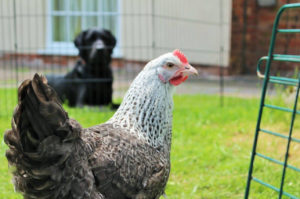
Stay Safe
Start with your chooks in their coop or a fenced in area. Keep your dog on leash and feed him treats, providing he is ignoring the chooks. If he is paying too much attention to them, move to a greater distance. The aim is to find a distance where he is not having any emotional response towards them.
Grade the Exposure
Providing your dog is ignoring the chooks at a certain distance, you can move gradually closer to them. Say you start at 50 feet away, slowly reduce to 45 feet, 40 feet and so on. Continue to praise and reward him for ignoring them. Remember, you want his emotional response to diminish. Keep training sessions short, you don’t want to over tire your dog. Some dogs get hyper-aroused just by being over-tired.
The Big Moment!
You’ve finally made it to near the chicken coop or fence, providing he is still pretty chilled out in ignorance of the chooks, ask him to sit next to the fence or coop. Praise and reward. If he behaves how you expect him to, lengthen the leash, so he can move around the border of the coop or fence, he can sniff and explore. If he’s calm, the chooks may even come over to investigate. Stay calm. If he starts getting excited or lunges/barks at them, remove him to a safe distance where he will ignore them again. You may need to do this a few times. What he learns is that to be around the chooks, I must stay calm. If your chooks will stay in a coop or fenced area, this may be where you spend the time repeating the behaviour and praising and rewarding. You may sit with him with a chew or just work on some commands. Again, the aim is to encourage him to ignore the chooks.
If you plan on having free range chickens, and canine and chooks will be mingling daily, read on.
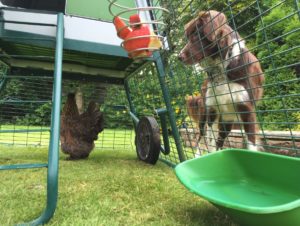 The Great Escape
The Great Escape
When you feel confident that your dog has so far, happily ignored the chooks and not shown any aggression or heightened arousal towards them, you can let them out of their coop/area to roam freely. Keep your dog on his leash. Ask him to sit or lay down if this makes you feel more comfortable. As the chooks are roaming, providing your dog shows little interest, praise and reward him. Again, you may want to give him a chew or even a slow feeding puzzle game. He just needs to learn than he can co-exist with the chickens without interacting with them a great deal.
Patience Is A Virtue
You may have to spend a significant amount of time working through these steps, but done in the right way, it will be worth it. Whilst on leash you can walk him through the chooks, he may sniff, they may also show interest too. The only behaviour you don’t want to see is aggression, lunging or chasing. If this happens, go straight back to beginning and work on the gradual exposure again.
Riding Solo?
The most nerve-wracking part will likely be when you feel he is ready to be let off leash to mingle on his own. Again, take your time. You may pop the chickens back in the coop and let him explore off leash around a fence. You may prefer to put him on a long line (50ft) when in with the free-range chooks. This way, he feels like he has more freedom, but you still have control if it goes pear shaped. Be realistic though, some dogs just never quite make it to being able to mingle unsupervised with chooks, so watch the behaviour of your dog and make the call.
Conclusion
Chooks to dogs are super-interesting, like most things. The long and the short of it, successful introductions mean the chooks are no longer that interesting and your dog learns that to be around them he simply just needs to be calm. Arm yourself with some high value treats, chews and any other slow feeder puzzles; start from a distance and encourage the behaviour you want to see. Praise and reward when you do. Grade the exposure. Always stay calm and in control and don’t be afraid of going back to square one if things don’t go as you’d hoped. It may take time, but it will be worth it when you have canine and chooks living in harmony.
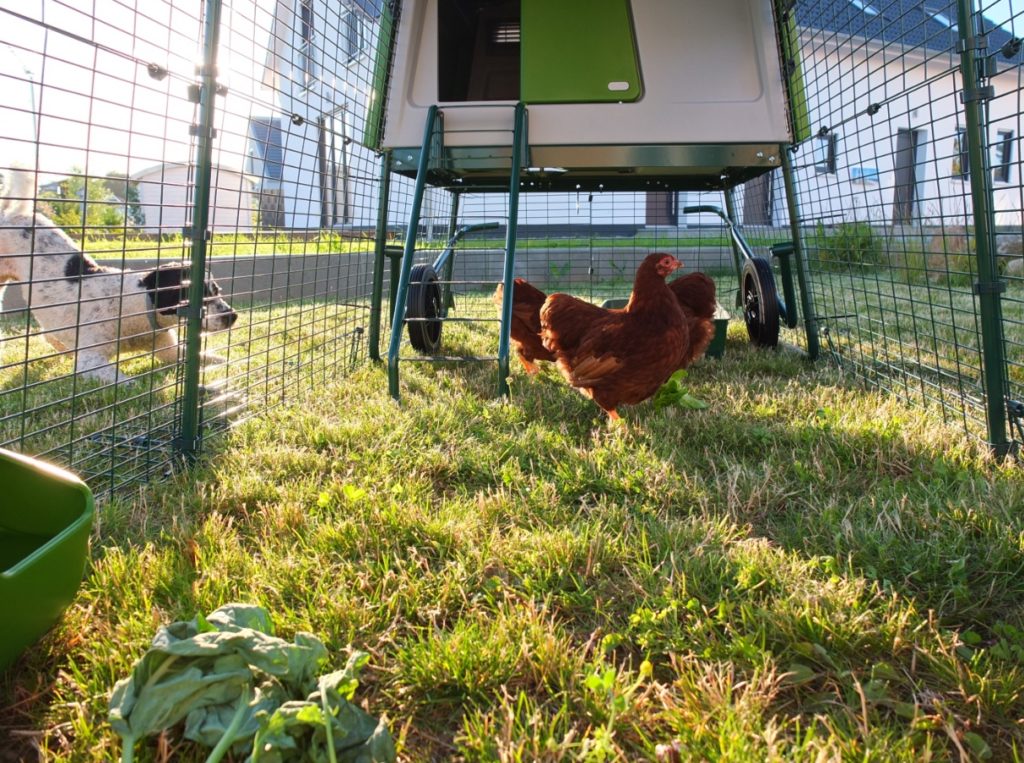
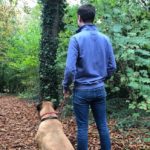 This post was written by John Wood at All Things Dogs.
This post was written by John Wood at All Things Dogs.
This entry was posted in Chickens

Rocky is a Medical Alert Assistance Dog and a fantastic companion for 7 year old Josh who has unexplained hypoglycemia and Epilepsy and has had many hospital stays since he was born. Rocky has been trained by the Medical Detection Dogs charity to alert Josh’s family when his blood sugars drop dangerously low and could trigger a seizure.
We spoke to Josh’s mum Paula to find our more about this delightful friendship!
What type of dog is Rocky? He’s a Cockapoo
How old is he? He’ll be 2 on the 28th September. He joined our family when he was 9 weeks old.
What does Rocky do to help Josh on a daily basis?
Rocky spends all his time with Josh and alerts us when his blood sugars drop too low by sense of smell. Josh has unexplained hypoglycemia along with epilepsy and his seizures can be triggered by low blood sugar. We test Josh’s blood sugar numerous times a day but are extremely lucky to have Rocky with us who has alerted us many times when his blood sugars drop to a dangerous level which has fortunately stopped things escalating to a medical emergency. Rocky sleeps in Josh’s room and we are confident he will come and wake us if he ever senses a problem.
If Rocky wants to alert Josh, he stands on his back legs and puts his paws on Josh’s shoulder and licks his face. If Josh is asleep he comes to find me and licks my hands to wake me.
Did the Medical Detection Dog Charity advise you about what type of dog to get? We had spoken with the charity prior to buying Rocky and knew what to look for when looking for a puppy to give us the best possible chance of buying a puppy that we may be able to train successfully. Obviously we knew there were no guarantees on this and also looked for a puppy we thought would be the ‘best fit’ as our new family member.
Did you have to crate train him or was he already crate trained when you got him? We chose to crate train. He was used to a crate from being with Mum so it was very straight forward. He took his blanket in with him and was always happy. The training we did with Rocky with the crate was very easy, primarily due to him already being used to one.
During Rocky’s Medical Detection Dog training did you have to attend lots of classes? Rocky and I used to have one to one training on a weekly basis. Josh attended the training whenever possible. I would also send off any records of alerting behaviours along with all of Josh’s blood sugar recordings.
What did the training include? Where was the training held? The training was held at a variety of places. It included public access, off lead walking, heal work, distraction work etc etc. We had a train trip, a bus trip, taxi ride, public access – so inside shops, supermarkets etc, in school, busy places and quieter places, all to see how Rocky would react. And of course, a vet visit.
How long did the training take from start to finish? Rocky qualified at 18 months of age. The youngest possible age to qualify. We were training with him from the moment he came home at 9 weeks of age.
Do you have to go for additional training even now he has qualified? We have a first post qualification check 6 months from qualification and then every 12 months after. If we come across any problems at all at any point, we are fully encouraged to speak with MDD for full support wherever it is needed. We will also attend regular refresher training to ensure Rocky maintains his high standard of behaviour and alerting.
What type of treats do you feed Rocky as a reward? Rocky always has the same reward, dehydrated hotdog sausage – his absolute favourite!
Is Rocky allowed to go everywhere with Josh?
Yes he is. Rocky has to wear his ‘Medical Alert Assistance Dog’ tabbard whenever we are out in public and is allowed in all public access areas including shops, restaurants, beaches and cinemas.
Rocky and Josh are best friends. Josh trusts Rocky completely and understands that he helps to keep him safe. Rocky is simply a life changing member of our family.
—————————–
Medical Detection Dogs is a fabulous charity that trains dogs to detect the odour of human disease. It is at the forefront of the research into the fight against cancer and helping people with life-threatening diseases. To find out more about the amazing work that they do click here
If you are looking to crate train your dog, click here to find out more about the Fido Studio Dog Crate
This entry was posted in Dogs

Why Crate Train?
It’s very common for people to assume that crate training is cruel and that dogs don’t like small spaces, but it has been shown that dogs love a calm, safe place that they can rest in and call their own. A dog crate offers a place to train as well as a place to sleep at night. It offers security from loud noises like fireworks and thunder, and a place to snooze after a long and tiring walk.
Crate training is an important process in your dog’s life, and is really helpful with toilet training your dog, so you’ll want to make the experience enjoyable for both you and your pet. The key thing is to make sure that your friend is happy and comfortable in their crate. There are a number of things that you can do to reinforce the idea that this is a nice, safe space for your dog to be in.
Here’s 7 reasons why crate training is important for a new puppy:
Security:
Appeals to a dog’s instinctual desire for a den-like structure.
Self-confidence
Sets a puppy up for success by reducing wee and poop accidents.
Self-reliance
Prepares a pup for handling alone time.
Privacy
Serves as a time-out device for pups and owners needing breaks.
Behavioural Health
Discourages and reduces separation anxiety in many cases.
Practicality
Gets pups used to confinement that may be required at the vet’s, the groomer’s and during car trips.
Transport Device
Contains a pup if he is injured and his mobility must be limited.
Make crate training an enjoyable experience
- Create a positive association with the crate using food and treats. Start feeding your dog near to the crate, and perhaps even put treats in the bedding. This way the idea of food, which is positive, will be associated with the crate.
- Use a blanket. Covering the top of the cage will give it a more solid, den-like appearance, and may make some dogs more comfortable with using it.
- Crate train slowly. You need to be patient with your pet, as this can be a bit of a difficult concept for them to grasp. If you rush training, it’s unlikely to stick, and this can create frustration for the pair of you.
The Fido Studio is perfect when crate training and it so much more than just an indoor dog crate. It’s the perfect compliment to your home and fulfills your dog’s natural instinct to have a den that they can call their own.
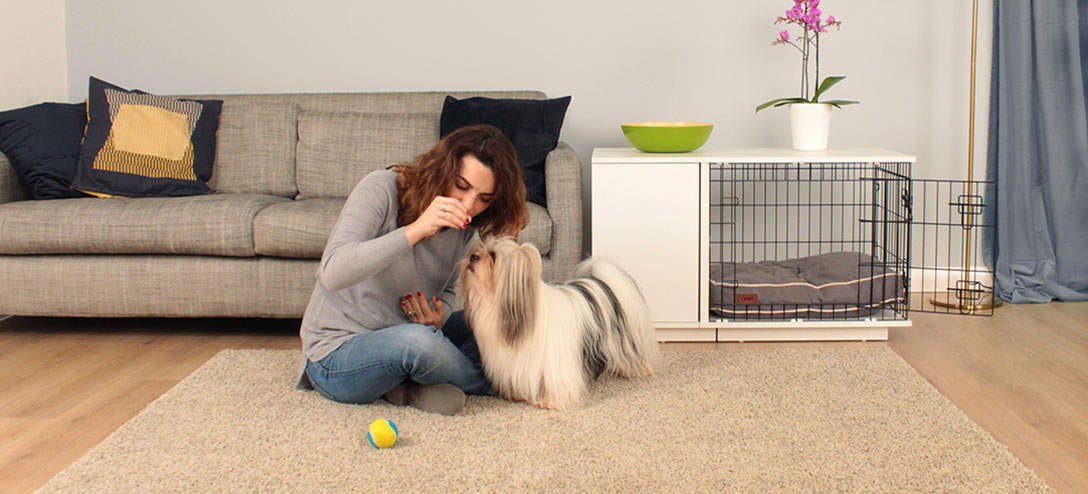
This entry was posted in Dogs





 Play Fetch in The Living Room
Play Fetch in The Living Room

 A dog who has been taught positive behaviour will be your best friend – fun, affectionate and reliable. It’s straightforward teaching your dog this canine version of positive thinking, but it won’t happen unless you lead the way.
A dog who has been taught positive behaviour will be your best friend – fun, affectionate and reliable. It’s straightforward teaching your dog this canine version of positive thinking, but it won’t happen unless you lead the way. 2. Affection
2. Affection 4. A trip to a favourite place
4. A trip to a favourite place 1. Keep it simple
1. Keep it simple 3. Quality time
3. Quality time


 It can be tricky to decide whether or not your dog should wear a collar or a harness for walks. A lot of it depends on your dog himself, from the breed to his age and activity level. No matter what type of breed you have, one thing’s for sure, they all need to go out on walks! The main two types of leash attachments that you can use for your dog are harnesses or collars.
It can be tricky to decide whether or not your dog should wear a collar or a harness for walks. A lot of it depends on your dog himself, from the breed to his age and activity level. No matter what type of breed you have, one thing’s for sure, they all need to go out on walks! The main two types of leash attachments that you can use for your dog are harnesses or collars. 















 The Great Escape
The Great Escape
 This post was written by John Wood at
This post was written by John Wood at 

